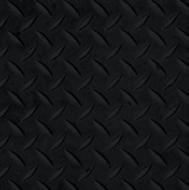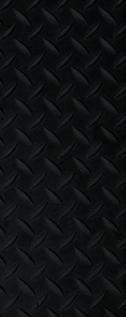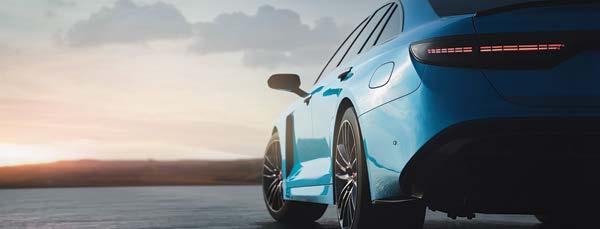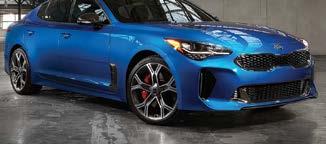




A nationwide survey conducted by the Auto Care Association has shed light on the significant obstacles that independent automotive repair shops encounter due to restricted access to vehicle repair and maintenance data. This limitation not only hampers their operational capabilities but also leads to substantial financial losses.
technician recruitment and inflation. This data is crucial for these businesses to perform routine repairs and maintenance effectively.
Moreover, the majority of these shops face routine difficulties in servicing vehicles, with 63% encountering obstacles on a daily or weekly basis. About 51% of the shops reported being forced to
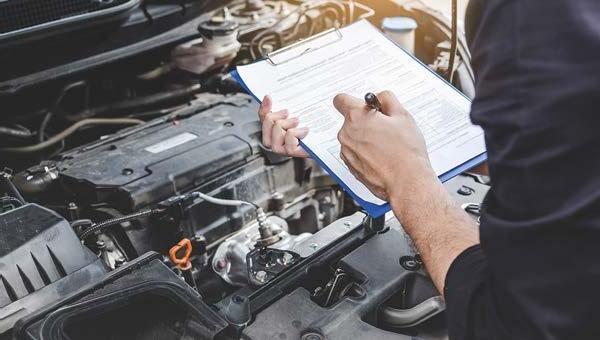
The findings support the need for the REPAIR Act (H.R. 906), a federal bill that would ensure vehicle owners and repairers of their choice have access to the vehicle data, tools and software required to maintain and repair modern vehicles.
The survey revealed 84% of independent repair facilities identify access to vehicle repair and maintenance data as their paramount concern, overshadowing other pressing issues such as
redirect up to five vehicles each month to dealerships due to these data restrictions, resulting in an estimated annual financial impact of $3.1 billion across the industry.
“This research sheds new light on the stark reality facing the 273,000 shops and 900,000 technicians in in the United States if Congress fails to take action on federal right to repair legislation,” said Bill Hanvey , president and
A survey conducted earlier this year by the Northwest Automotive Trades Association (NATA) showed the general shop labor rate is up statewide to about $151, a 25% increase from 2021, the last time the survey was conducted.
NATA said it distributed the survey to more than 500 shops throughout Oregon, both members and nonmembers of the association. More than 100 shops participated. Those shops averaged just under seven full-time employees each, including an average of 4.3 fulltime production employees and 2.5 fulltime office staff.
In addition to finding a 25% increase in the general shop labor rate, the survey found:
Shops tend to charge slightly
more than their general labor rate for diagnostic work. There is even more range in diagnostic rates shop to shop, from a low statewide of $95 to a high of $239 per hour.
Of shops charging a flat fee for an oil change — as about two-thirds of shops do — the average was $60, up nearly 18% since 2021. Of those charging based on a labor rate, the average labor rate was $90, up nearly 70% from three years ago.
NATA noted the sample size for this category was quite small.
There is significant variance in how much shops mark-up prices on parts. Mark-up on used parts is fairly consistent across the state, with shops typically charging a customer
l
The Northwest Auto Care Alliance (NWACA) is hosting its second annual Collision Training Expo (CTE), May 3-4 at Clover Park Technical College in Lakewood, WA.
The inaugural CTE in 2023 was such a success, it has been expanded from one to two full days of training classes and a trade show.
The event is designed for everyone
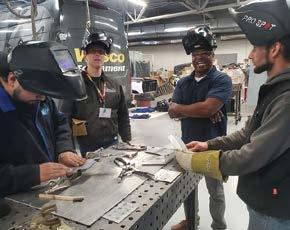


One of the most important skills for successful collision repair estimators is a good working knowledge of the “p-pages,” or estimating reference manual, for the information system they are using, whether it is made by Audatex, CCC or Mitchell. These guides help an estimator understand what is included – and just as importantly, what isn’t included – in the labor times provided within the systems. The guides differ from one another and continue to evolve, so staying abreast of changes is important.
Danny Gredinberg of the Database Enhancement Gateway (DEG) said while the guide is generally accessible within the system itself, estimators reviewing an estimate prepared in one of the other systems may need to review that system’s guide as well. All three guides are available on the DEG’s website, degweb.org/industryestimating-systems/.
Gredinberg highlighted some of the recent changes in the guides in a presentation at an industry event earlier this year.
Audatex Solera Qapter Database Reference Manual
The latest version of the Audatex Solera Qapter Database Reference Manual, for example, spells out that “any fees related to OEM data subscriptions or information access are not included in part prices or labor values within Audatex estimating.” The same is true for any labor related to access or research of OEM service information or electronic parts catalogues.
Another new labor exclusion in section 4-2 of the document reads that “additional repair operations that are taught in an OEM training environment but aren’t included in the current OEM reference material” are not included in the system’s labor times.
“You may have to go to an OEM technical school to learn a specific repair procedure, for example,” Gredinberg said. “A lot of manufacturers may have specific information they don’t define in the actual OEM repair procedure. So it’s very important to attend the [OEM] training if it’s available because there are going to be a lot of takeaways from those for specific repairs.”
Also newly excluded from Audatex labor times is the labor to apply seam sealer on new parts that require it.
“This is an update because previously they did include seam
sealer application on bolt-on parts,” Gredinberg said.
Also excluded is assembly of new parts that come in multiple unassembled parts from the manufacturer.
“If you order a grille assembly, you may receive a box of four or five or seven different parts,” Gredinberg said. “You have to build that component to be installed. That is a not-included operation.”
Set-up of riveting equipment and
have to put a part on a stand to refinish it in a certain way,” he said. “Sometimes you have to get creative in order to get the coatings to all the nooks and crannies, the backsides and undersides. If you have to set a stand up in a unique way, that’s a notincluded operation.”
The guide now indicates repair times in the system include “one test fit of a component.” In response to a inquiry, Gredinberg said, Motor

materials, as well as test riveting, is also another new labor exclusion in Audatex.
Within the refinish guidelines in section 4-4, Gredinberg said, the blend formula wording – previously defined as 50% of the full panel refinish time –has been deleted, with Audatex stating that it “does not provide a standard labor allowance for blending panels as this requires the estimate preparer’s judgment [and] expertise, [along with] consideration of the unique requirements for each repair.”
“It allows the end-user to put whatever percentage they feel is necessary for performing the blend,” Gredinberg said.
A similar change related to the blend formula has been made in the Motor Guide to Estimating, the basis for the CCC Intelligent Solutions estimating system. Motor has eliminated blend formula, Gredinberg said, and instead states “estimated refinish times for color blending should defer to the judgment of an estimator or appraiser following an on-the-spot evaluation of the specific vehicle and refinishing requirements in question.”
Also in the refinish section, Gredinberg said, Motor has added that assembling or setting up a unique fixture or stand to hold parts for refinishing is a not-included operation.
“Many times when we’re painting parts off of the vehicle, we may
be included in that section with a labor allowance for the performance of the task if necessary.”
Gredinberg said another update notes the labor times shown for air conditioning evacuation and recharge represent “utilizing A/C servicing equipment in a collision repair environment that evacuates the system by applying vacuum that must be held by the system for a certain period of time (leak check) confirmed with an electronic leak detection equipment post refill.”
“So essentially take an electronic sniffer monitor like an A/C leak detection tool and check just the service ports, that’s included,” Gredinberg said. “But if you have to diagnose a leak within the entire system, that time is not factored into evacuate and recharge. Some vehicle manufacturers may have different routing of those lines and refrigerant type. So always follow manufacturer guidelines but, again, to leak check just at the ports is an included operation.”
clarified its labor times do not “include a second (or more) fitment of a component to the vehicle, for any reason (including verification of dimensional accuracy or adjacent part alignment),” and “if more than one component installation is required for a specific repair plan, an on-the-spot evaluation should be used for the number of fitments beyond the first one required to perform the repair.”
In the wheel section of the guide, Gredinberg said, “torque wheel to OE specifications” is now included in labor times.
“But if you look at a lot of these repair operations or repair manuals, it may tell you to retorque the wheel after so many miles of road testing the vehicle,” he said. “If you have to retorque, perform duplicate effort, it’s a not-included operation. So again, this identifies that one ‘torque wheel to specifications’ is included.”
Mitchell P-pages
Mitchell also has made recent changes to its Collision Estimating Guide P-pages. Under the labor general information section, for example, a new section on caulking indicates that “labor times…for bolton panels includes the application of caulking/seam sealer.” If Mitchell determines an OEM replacement part is not serviced consistently by a vehicle manufacturer, it will add a footnote — “does not include application of caulking” – to the specific panels, and “a headnote will

In any case, diagnosing a failed leak check test is not included, the guide states.
In terms of adhesive emblems, Gredinberg said, Mitchell says the times shown “represent installing the emblem in the correct location by performing some combination of measuring, marking and aligning to ensure proper positioning,” but “time for the fabrication of a template for emblem installation per a specific OEM procedure is not included.” Gredinberg said it’s important to check the OEM procedures for the emblems you are installing, and noted that according to the Mitchell guide, “research, retrieval, review or usage cost of OEM or other service procedural information” is a not-included operation – something all three information providers have updated to define as not-included steps.
Lastly, Gredinberg said, Mitchell has updated the guide to indicate the time to “perform weld testing or matching [including] destructive weld testing” is not included in the labor times in the estimating system.


about $156 for a used part that costs the shop $100; this has remained mostly unchanged since 2017. But the customer charge for a $100 new OEM part ranges from a low of $105 to a high of $250. The range in markup on aftermarket parts is even wider, from a low of
$112 to a high of $242. Some shops noted that some of their parts pricing is based on list prices for the parts.
More than one-third of shops statewide are not charging for hazardous waste disposal. Of those charging a flat-fee per work order for it, the statewide average is about $7, up about $3 from 2021.
There is also wide variation in how shops charge for shop supplies. The flatfee used by some shops averages about $7, while other shops base the charge as a percentage of labor, typically between 4% and 5%, and often with a cap.
The statewide data findings have a margin of error of about 10%. This means that, if the statewide average labor rate was found to be $100, there is 95% confidence the actual average is between $90 and $110.
Geographic regional data may have higher or lower margins of error based on sample size.
in a collision repair shop, including managers, owners, estimators and technicians, to help them keep up with evolving technology, enhance their skills, improve safety in their workplaces and make sure their shops are meeting state regulations and standards.
Micah Strom, collision chair of NWACA and the owner of Modern Collision Rebuild and Service in Bainbridge Island, WA, said the NWACA hosted a training expo for mechanical shops for 20 years and felt it was time to offer the same to its collision shop members.
“We started the CTE for our members and for the industry in general, to get some good training out there,” Strom said. “There’s not a lot [of collision training] here in the Northwest, and that’s why we put this together.”
CTE is open to the entire collision repair industry. The cost to attend is $175 for NWACA members and $250 for non-members. Visit ctetrainingexpo.com for more information and to register.
Strom said there are a lot of returning sponsors from the first CTE, including CCC, ATI, 3M and
Wesco, but there are also several new sponsors, which reached out after last year’s event to ask to participate in 2024.
“They realized what a success it was,” Strom said. “This is the first event like this in the IdahoWashington-Oregon area, where you can send the whole shop to it, because it covers everything.”
Among the new sponsors are I-CAR, whose lead subject matter expert, Jeff Poole, is teaching “EV Overview and Considerations,” and Hunter Engineering, which is sponsoring “Collision Alignments” and “Wheel Alignment Fundamentals,” taught by Ken Sumerlin
There will be several hands-on classes.
“Spray Efficiency Training,” sponsored by PPRC, will show painters, using a VR system, how to improve their paint spray efficiency
and consistency, reducing both hazardous waste and materials costs.
A dent-pulling demo, led by Ben Else with Industrial Finishes, will show attendees how to use a GYS steel and aluminum dent repair system, as well as a glue pulling system.
Chris Pope of Wesco will lead a hands-on resistance welding workshop, and Stephen Flaiz will lead “What to Do When Calibrations Don’t Go as Planned!”
Other educational sessions will cover everything from complying with Washington State’s Automotive Repair Act to understanding your shop’s key numbers so you can grow your business.
Finally, a Shop Owner Roundtable will be held from noon to 1:30 p.m. May 4 to bring together owners and managers to discuss the issues they are facing and learn from each other.



State-of-the-art paint systems and the latest application recommendations open up new possibilities, but also pose new challenges for professional painters. The SATAjet X 5500 featuring the new X-nozzle system defines a completely new application standard for the future.
Revolutionary: The X-nozzles are taking atomization to a whole new level
Noticeably quieter: reduced noise level in the relevant sound frequency ranges due to optimized flow geometry of the whispering nozzle
Individual: Matches any application requirement, such as specific characteristics of the paint system, climatic conditions and application method (application speed/control)
Precise: Optimized material distribution for enhanced spraying uniformity and atomization with both spray fan shapes
Low maintenance: No air distribution ring required, which ensures a much easier and faster cleaning process
Efficient: The optimized atomization concept allows for considerable material savings
INFO
www.sata.com/x5500
SATA USA Inc.
1 Sata Drive • PO Box 46
Spring Valley, MN 55975
Phone: 800-533-8016
E-mail: satajet@satausa.com
www.satausa.com
A new survey conducted by WrenchWay found the average collision repair technician makes far more than the U.S. Bureau of Labor Statistics (BLS) reports, but more data is needed to be able to definitively present that positive information to young people considering a career in the industry.
WrenchWay co-founders Jay Goninen and Mark Wilson presented the results from their 2024 Technician Pay survey, which gathered data on pay and benefits from technicians across the country, in a Zoom webinar March 26: “Is BLS Data a Bunch of BS?”
median experience of 13 years.
“We were light on data for the collision side, but hopefully you guys can help us get more,” Wilson said.
The survey results are available for all to see via the Automotive and Diesel Technician Compensation Tool at wrenchway.com/pay. Users can filter the results by industry category, shop type, ZIP code and radius, and years of experience in the industry.
That is also where technicians can continue to submit their own pay data, which Wilson and Goninen encouraged everyone to do. They also asked technicians and managers to invite friends, employees and coworkers to fill out the sevenquestion survey.

According to the BLS, the average pay of an automotive technician is $46,970 per year, or $22.58 per hour, and the average pay for diesel technicians is $54,360 per year, or $26.14 per hour. The agency also cites the highest 10% earning around $75,000.
Goninen and Wilson said they already knew from the more than 1,000 shops on WrenchWay and countless others they work with that the data is simply not accurate.
Their brief, self-reported survey has been completed by about 3,000 technicians so far, which were broken down into four industry categories: automotive, diesel, collision and school, which covers high school and college instructors.
The data shows the mean salary for collision repair technicians was about $87,000 per year, and the average was $89,000.
However, of those 3,000 responses, only 43 came from collision repair technicians, with a
Wilson said the problem with the BLS statistics is that it groups so many careers under “automotive technician,” from an entry-level employee at a quick lube shop to a master technician with 40 years of experience.
BLS data also figures out annual salaries by simply multiplying hourly rates by 2,080 hours a year, but that doesn’t take into account those who work more than 40 hours per week, so a lot of technicians make more in a year than their hourly wage would indicate.
“That method just doesn’t work in our industry,” Wilson said.
The result is an average pay that doesn’t look appealing to young people considering a career to pursue.
“The problem is a high school student shows interest, they look at salary data from BLS and it s good, but not great,” Goninen said. “There’s a lot of training to keep up with and the student has to pay for their own
tools. It’s all false except the tool part. There are some really competitive salaries.”
Goninen and Wilson acknowledged the fact the responses largely came from experienced technicians, which skewed the average salary numbers higher than those for entry-level technicians with less than three years of work experience.
“A lot of people want to see the industry promoted as a great career,” Wilson said to explain why longtime technicians seemed to be more willing to participate.
Goninen said going in, they had been a little concerned only entrylevel technicians would respond, which would not show the long-term earning potential.
“We want to have realistic data,” Goninen continued. “We don t want to over emphasize the beginning salary, because it’s hard to compete with Amazon and others offering bigger starting salaries, but we can give them hope, that maybe if I can stay in this industry, I can have a very successful career.”
Looking at the rest of the survey results, a large majority – about twothirds – of all respondents said they were automotive technicians. They reported a mean experience level of 18 years, a mean salary of just over $89,000 and a median of $83,000.
Wilson said setting the results to show auto techs with zero to three years of experience returned a mean salary of $49,173, about what he expected. There were not enough collision repair respondents with the same amount of experience to generate a result.
The automotive technician data can be further broken down into those working for dealerships, either domestic or import brands; independent shops servicing all makes and models or specializing in one; fleet; service and tire chains; quick change lube shops; mobile services; or those servicing RVs or EVs.
Diesel technicians were the next-largest segment, with 644 respondents with a mean experience of 13 years, a mean salary of $83,519 and median of $77,509. They could indicate if they worked in a shop, or on construction or agricultural equipment.
The “school” category had a handful more respondents than collision repair – 50 respondents with a mean experience of 30 years reported a mean salary of $79,013 and median of $77,750.
In a follow up call, Goninen said WrenchWay is still developing its relationship with the collision repair industry. The aim is to gather enough data from technicians to be able to break it down into salaries for working in dealerships vs. independent shops and other subsets, similar to the automotive technician and diesel categories.
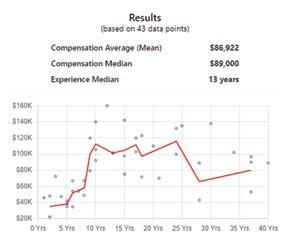
“We’re still very much growing the collision side of this,” Goninen said. “It’s very early in the process.”
Goninen said collision repair shops can join WrenchWay to post jobs, be searchable for technicians looking for jobs, and connect with local schools.
“The job board is like Zillow is to housing,” Goninen said. “A technician can do their due diligence on an employer, and an employer has a chance to ‘sell’ themselves to new employees.”
The School Connect program allows automotive education programs at high schools and postsecondary schools to ask for what they need to effectively teach their students – be it speakers to come to class, new equipment, or shops to place their students in apprenticeships, internships and job shadows.
For instance, one school posted to the School Connect board looking for a new brake lathe, which was donated before the end of the week by a local car dealership.
“It helps grow that program,” Goninen said. “So many schools have significant budget restrictions that lead to the program being cut. They need proper equipment and tools. The [donating] shop gets to build a relationship with that school beyond a twice-a-year advisory committee meeting.”
“I think job shadows will be critical as we move forward,” Goninen added.
For more information, visit wrenchway.com.



A recent industry survey found while fewer shops are successfully negotiating to be paid their higher labor rate for aluminum repair work, other new vehicle technology is adding more lines to shops’ estimates and final invoices.
Among more than 500 shops participating in a recent “Who Pays for What?” survey, the vast majority — 84% — perform aluminum repair work, and 43% hold an OEM certification for aluminum repair from one or more automakers. With the added expense of separate tools and work areas designated for aluminum work, along with training and other certification requirements, shops have seen a need for different hourly rates for aluminum repair compared to standard steel body repairs.
It appears insurers, however, have been pushing back on those higher labor rates for aluminum work. Over the past five years, fewer and fewer shops participating in the surveys are being paid the higher rates. Just 29% of those performing aluminum work reported through the survey they are being paid their aluminum rate on a regular basis (“always” or “most of the


time”) by the eight largest national insurers. That was down significantly from the same survey five years ago, when 54% of shops said they were regularly being paid their aluminum repair rates.
The average percentage of shops reporting that insurers “never” pay their aluminum rates has been slowly
grows, for example, more shops are getting paid for keeping those vehicles charged while in the shop. Nearly 2 in 5 shops (38%) say they are paid always or most of the time by the largest insurers for electric vehicle recharge. That was up nearly 13 percentage points from a year earlier. About an equal percentage

increasing over the past five years as well, rising from 25% in 2019 to 37% in late 2023.
In better news for collision repairers, however, shops are more regularly being paid for labor operations that are becoming increasingly common because of changes in vehicle technology.
As the electric vehicle population
(41%) said those insurers never pay for that procedure, but that was down from about 50% the prior year.
Given that only a small — but growing — number of automakers require a radar power test on select vehicle models, it’s perhaps not surprising that two-thirds of shops responding to the survey said they had never billed for the procedure.



But the survey, which was the first to ask about radar power tests, found more than 2 in 5 shops (42%) that have billed one or more of the eight largest insurers for the procedure said they have been paid all or most of the time.
“It’s a static function test to see if painting the bumper has reduced the power of a radar sensor too much,” said Mike Anderson of Collision Advice, who conducts the “Who Pays” surveys. “The test is needed if the system uses higher resolution radar for blind spot systems that are able to identify not just a vehicle in the blind spot, but even smaller objects such as a bicycle.
“The test uses what is essentially a metal pole on wheels, to measure, when the system is engaged, how much the bumper cover is reducing the power signal of the radar sensor,” Anderson continued. “The test is currently required for some Mercedes-Benz and Toyota vehicles but likely will be required on more makes and models in the future.”
The latest “Who Pays” survey, which focuses on not-included frame and mechanical labor operations, is open during the month of April; shops can click visit www.surveymonkey. com/r/9NC7D6B to take the survey.

For 27 years, Bowen’s Collision has been a pillar of the Columbia, South Carolina community, but it was only in the last two years that the family-owned and operated business experienced impressive growth, adding two new locations, with plans to open more in the next few years.
General Manager Scott Austin attributes Bowen’s Collision’s success to their world-class customer service and top-quality repairs.

Putting customers first and delivering high-caliber repairs wouldn’t be possible without consistent performance, which is why Austin focused on developing more standardized routines and processes for his technicians to streamline things like diagnostic scans, which he believes gives Bowen’s Collision a competitive edge.
In fact, the decision to scan every vehicle that comes into the shop was a “no-brainer,” according to Austin, because the benefits of doing so far outweigh the drawbacks. He said most manufacturers no longer recommend scans –– they require them, yet not every shop does them consistently.
“Scans cover all the bases,” says Austin. “Pre-repair scans help us find out where the initial problems are and eliminate others right away. Documentation beats conversation and having all the information up front helps us know what we’re getting into and be prepared to have a discussion if we have to. It’s good for our customers and it’s great for our shops.”
Austin says the benefits of knowing more about vehicle damage earlier in the repair process can help save everyone time,
money, and resources, which leads to happier customers. It’s also increased revenue and profitability for his shop, he said. The cost of a brand-new scanner quickly pays for itself because the shop can bill carriers or self-paying customers for each scan, and the scans aren’t time-consuming to perform.
The problem shops often have with integrating diagnostics into their repair processes is “remembering not to forget” to scan or calibrate, sometimes even resorting to sticky notes to remind them of these critical tasks.
Austin says that’s why he uses CCC® Diagnostics Workflow, because it helps his team integrate diagnostics into every single repair plan and keep track of every scan all in one place. The result?
A diagnostics process that comes naturally to his technicians. They no longer need reminders, and they don’t even have to think about it –– it’s simply a required operation for every vehicle, every time.
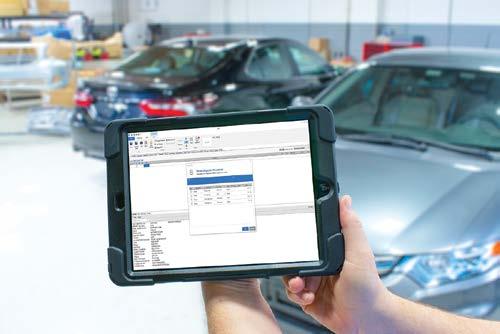
“You’ve got to make sure you do it, because it’s the times you don’t that you get whistle bit,” Austin says. “We’re all about helping people –– that’s truly our mission, and if we can make a customer feel better about their repair knowing we did everything we could to diagnose the problem, well, then, we’re practicing what we preach.”

To learn more about CCC Diagnostics Workflow, visit www.cccis.com/diagnostics
On a recent episode of The Collision Vision podcast, driven by Autobody News, host Cole Strandberg spoke with Michelle Sullivan , who became CEO of Certified Collision Group (CCG) earlier this year.
The conversation touched on high level industry trends, the future of independent collision repairers, and how independent shops can stay competitive in an increasingly consolidated industry.
“There’s no sign of [consolidation] slowing down in 2024,” Sullivan said. “We’re seeing a lot of regional private equity-backed platforms coming into the industry. Yes, the consolidators are growing, no question about that. But so are the regionals and so are single-store operators.”
Sullivan said high-performing shops have multiple OEM certifications and are focused on culture.
they didn’t have a backlog, they just figured it out.”
Sullivan said she is a “huge supporter” of peer groups, like 20 Groups, and networks. CCG has built a network of nearly 800 like-minded operators across 46 U.S. states, and earlier this year announced it is expanding into Canada. Sullivan said there is power in those operators being able to connect, bounce ideas off each other and share best practices.
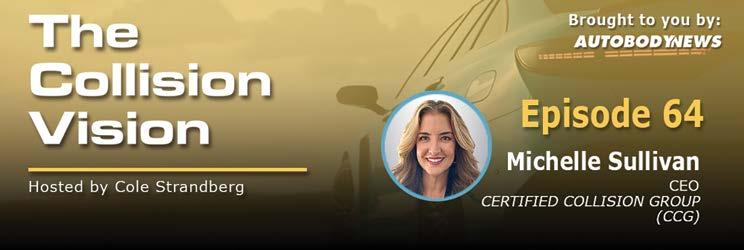
Sullivan’s career in the collision repair industry began about 30 years ago in Baltimore, MD, when she went to work for Superior Auto Paints. She worked in every department within the company on her way to rising to become president.
After Superior Auto Paints was sold to a national distributor, Sullivan worked for AkzoNobel and FinishMaster. In those positions, she worked as a vendor partner for CCG when it first came to the market 10 years ago.
“Industry dynamics were changing, consolidation was ramping up. And [CCG] came in with the premise of kind of leveling the playing field for the independent repairers,” Sullivan said. “Their premise was the OE certifications and really improving shop performance. How can you not get behind that?
“I was able to see firsthand what some of those affiliates were experiencing. Whether it was shop performance or performance management or the vendor programs, it was impactful,” Sullivan said. “So when the opportunity came up [to join CCG as CEO]…I was thrilled. It’s a full circle moment for me because I’m working with a lot of customers, a lot of vendors, and a lot of stakeholders that I’ve worked with at some point in my career.”
“Consolidation will continue, but so will the independents. They’ll continue to thrive,” she said. “There’s more pressure on having that exceptional customer service experience. Everyone wants that Amazon-type experience. You know, everything is easy. And our industry is no exception to that. So shops that figure that out, they’ll be successful.”
“I read this quote a long time ago and it stuck with me: ‘Your customer experience will never be greater than your employee experience.’ That’s so powerful,” Sullivan said.
The high performers are focused on their employees, Sullivan said.
“They’re creating an ownership mindset, and they’ve got people on the team that want to contribute,” she said. “They don’t have issues with retention, right? They’re keeping their teams. Their teams are engaged, and there’s something to be said for that with the employees.”
Sullivan said the first time she visited a shop that wasn’t chaotic, it was almost eerie.
“They had figured out how to create processes that minimize that chaos,” she said. “It’s not that they weren’t busy, and it’s not that
dramatically,” she said. “Not only make sure that you’re up to speed on what the trends are, what the changes are, but that your team is and that your organization is positioned for that. You’re not responsible just for yourself, but you’re responsible for those that you serve.”
Sullivan’s second takeaway is to invest in the development of others.
“We’re not fighting each other; we’re all rising together,” Sullivan said.
Sullivan said CCG looks for shops with industry-leading KPIs and OEM certifications. Then CCG’s performance management groups work with shops to help them further improve their businesses.
“One of the biggest things our affiliates really love about the network is these are highperforming operators that have really built solid reputations in their market,” Sullivan said. “They’re very much involved with the community and their name and their legacy is important to them. We have a very nonintrusive model, so you don’t have to change your name. You don’t have to give up everything that you know you’ve built.”
Sullivan said CCG’s affiliates appreciate that model.
“There’s a lot of interest in the network,” she said. “As consolidation continues, people are looking to level the playing field. The company was built on that foundation. And that still exists today.”
Sullivan said in her 30 years in the industry, she has never taken for granted the dedication and commitment of all stakeholders to performing proper repairs.
“I just want to give a shout-out to all those people out there, because they’re really the difference makers,” she said.
Sullivan said her first takeaway is to embrace being a lifelong learner.
“There is always something to learn. This industry is changing
“I read this quote a long time ago and it stuck with me: ‘Your
customer experience will never be greater than your employee experience.’ That’s so powerful.”
MICHELLE SULLIVAN CEO OF CCG
“Understand what the individuals on your team want, what their ‘why’ is, understand where they want to go, and be relentless in helping them get there,” she said. “High performers want to contribute. They love feedback and they love transparency. If you have a high performer on your team, make sure that you’re having regular career path conversations with them so you don’t ever run the risk of losing them.
“But more importantly, they lead the industry,” she added. “So again, that customer experience will never be greater than the employee experience.”
Sullivan’s third takeaway is to build your community and stay connected.
“Industry organizations are a great way to be connected to the overall industry,” she said. “You learn from the organizations and today, more than ever, there is a need for that. And you can find those 20 groups that we talked about and find a way to stay connected.”
Sullivan encouraged listeners to follow CCG on LinkedIn for an exciting announcement set to come out at CCG’s conference April 21. More information on CCG can also be found on its website, certifiedcg.com.
Listen to the full episode at www. autobodynews.com/podcasts or watch it at www.youtube.com/ watch?v=WteWcElj8kA
Drive profitability through efficiency, consistency, and quality repairs with OEC collision shop solutions
Solutions for the Modern Collision Repair Business
Parts Ordering
Repair Planning
Certified Repair

Coaching


Download the Repair Planning Field ReportV3
Discover the ways RepairLogic is improving repair safety by helping repairers adapt to Electric Vehicles and track OEM procedure changes.

www.OEConnection.com
What are you waiting for?
Learn more about our collision shop solutions and how the solutions can help your shop drive consistent and quality repairs.
Two federal agencies recently submitted a joint comment recommending renewing and expanding temporary repairrelated exemptions to a federal law protecting copyrighted content, to allow consumers’ and businesses’ right to repair their own products.
The Federal Trade Commission (FTC) and the Department of Justice’s Antitrust Division (DOJ) submitted the comment to the U.S. Copyright Office, which might recommend the Librarian of Congress renew and expand exemptions to the Digital Millennium Copyright Act (DMCA), passed in 1998, which prohibits circumventing measures that control access to copyrighted content.
In their comment, the FTC and DOJ said renewing and expanding repair-related exemptions would promote competition in markets for replacement parts, repair and maintenance services, as well as allow competition in markets for repairable products. Doing so would benefit consumers and businesses by making it easier and cheaper to fix things they own. Expanding repair exemptions can also remove barriers
that limit the ability of independent service providers to provide repair services.
According to the comment, software “locks” that protect copyrighted content from theft and infringing uses can also be used to prevent third-party repair, by the owner of the product or an independent repairer.

For example, such measures can restrict access to computer maintenance hardware and software programs, leaving only the OEM able to do maintenance and repair work. The FTC and DOJ said that can be used to squash competition for replacement parts, repair and
maintenance, which ultimately limits consumers’ and businesses’ choices and raises costs.
Among the specific DMCA exemptions the FTC and DOJ support renewing is one related to the repair of vehicles. They also support adding a new one to allow vehicle owners or independent repair shops to access, store and share vehicle operational data.
In a statement, Bill Hanvey, president and CEO of Auto Care Association, said his organization supports the joint comment.
“In particular, on behalf of the entire automotive aftermarket, Auto Care Association agrees with the DOJ and the FTC that the Class 7 exemption to allow vehicle owners and repair facilities greater access to vehicle diagnostic and telematics data for monitoring purposes is critically important to lower the cost of repairs, improve access to repair services, and minimize costly and inconvenient delays,” Hanvey said.
The Auto Care Association also launched a new video campaign emphasizing the need to pass a new law, the Right to Equitable and Professional Auto Industry Repair (REPAIR) Act, which was unanimously advanced by the U.S. House Energy
and Commerce Subcommittee on Innovation, Data, and Commerce last November.
In the new campaign, shop owners from across the U.S. share their stories and shed light on the increased challenges independent repair shops are facing with accessing repair data to service their customers’ vehicles.
“You can’t do the simplest job anymore without [needing] to get into the computer system,” said Dwayne Myers, co-owner of Dynamic Automotive, an automotive repair business with six locations in Frederick County in Maryland. “If Congress doesn’t take action on the right to repair, it will only increase what it costs to fix your car. The REPAIR Act has bipartisan support because it really ties back to the American dream. It puts everyone on a fair playing field.”
“The impact to the consumer is that they have less choice and pay more for repairs that take two, three or four times longer,” said Kathleen Callahan, owner of Xpertech Auto Repair, a family-owned automotive repair shop in Englewood, FL. “I support the REPAIR Act because I want to protect my legacy, my customer’s choice, and the independent aftermarket that I’m so proud to be a part of.”


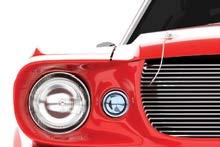









In today’s collision industry environment, many shop owners and managers are finding competent staff are becoming a scarce and valuable commodity. In response, progressive companies are looking for ways to differentiate themselves to be the “employer of choice” in their marketplace, according to Tim Ronak, senior services consultant at AkzoNobel.
One option is to implement a fourday workweek.
“A four-day workweek can be a powerful recruiting tool that positively impacts facility morale, helping to foster an environment to becoming an ‘employer of choice,’” he said.
Ronak and Tony Adams, a business services consultant at AkzoNobel, discussed the potential benefits and challenges of this alternative structure during the AkzoNobel Acoat Selected North American Performance Group event in Orlando, FL, in March. They also presented the idea during a presentation held as part of the Society of Collision Repair Specialists (SCRS) Repairer Driven Education Series at the SEMA Show in Las Vegas, NV, in November 2023.
“It typically involves reducing the workweek from five days to four while maintaining the same number of weekly working hours,” explained Ronak. “However, it can mean different things to different stakeholders.”
In the European Union (EU), for example, the alternative structure can imply four eight-hour days, resulting in a 32-hour workweek. However, in the U.S., Ronak said businesses typically work four 10-hour days to maintain a 40-hour workweek.
Ronak shared information about an EU study conducted in June 2022 that evaluated the merits of a fourday work week. Over six months, 61 organizations reduced their work hours by 20% with no pay decrease.
“They found that it boosted employee well-being without comprising productivity,” he said.
Participating companies reported a 65% reduction in sick days and a 57% decrease in staff turnover. At the same time, 71% of employees reported lower levels of burnout and 39% said they were less stressed compared to the beginning of the trial. This resulted in 92% of the companies planning to continue with a four-day work week; 18 companies said it would be a permanent change in their business.
Ronak noted the work schedule variations implemented by the organizations. While some stopped work entirely for a three-day weekend, others staggered a reduced workforce over a week. A selection of participants designated fewer holiday days and others set an agreement that staff could be called in at short notice. Some decided that a “conditional” four-day week would only continue while performance targets were met.
with the same amount of output, Ronak said they would need to work at 156% efficiency for 50 hours of output and 187% efficiency with six hours of output.
With one less day of coffee or lunch breaks during the week, Ronak said there are fewer stop-and-start intervals, potentially allowing for more productivity.
“The fewer breaks and the longer days seem to drive efficiency,” he said.

Adams then talked about the pros and cons of the alternative work schedule. Potential advantages for employers include increased employee retention and productivity, cost savings, a positive impact on company culture and enhanced employee morale, and a reduced carbon footprint with less commuting.
scheduling complexities.
“It’s a hard shift for some of us serial entrepreneurs who are trying to figure out how to maximize the efficiency of our facilities,” said Adams.
Challenges for employees include longer workdays, the potential for burnout, difficulty adjusting and reduced opportunities for overtime pay.
Adams said there is no one-sizefits-all scenario and encourages owners and managers to consider the pros and cons before deciding what is best for the facility.
“Care must be taken to ensure that facility output is maintained or improved and that formal structure is enforced so customers and vendors are clear regarding facility operating hours,” he said.
The study found most employees used the extra time off as “life admin,” spending the day doing tasks such as shopping and chores and taking care of family obligations.
“Many explained how the extra time off allowed them a proper break for leisure activities on Saturday and Sunday,” noted Ronak.
Ronak shared information about the United Auto Workers contract negotiations in September 2023, which included the demand for a fourday, 32-hour workweek. Although the new structure wasn’t part of the contract terms, the union is reportedly still interested in the idea.
Ronak also addressed the role of efficiency with a four-day workweek and examined whether it can be achieved in fewer hours.
“With a 20% reduction in hours worked, you would need a 25% increase in productivity to maintain the same output as before,” he noted. “How can people at their peak work fewer hours and still create the same output when you shift to four-days?”
He explained 40 hours worked at 125% efficiency generates 50 hours of output; 150% efficiency equals 60 hours of output for 40 hours of effort. Having employees work 32 hours
“We’re all vying for people right now,” said Adams. “It becomes a differentiator in the workplace if everybody around you is working five days a week and you’re able to give employees the gift of 50 more days a year, more time with their families and an extra day to do some activities.”
Advantages for employees include improved work-life balance, increased productivity and focus, and reduced commuting time driving in off-hours.
“We’re giving employees the gift of less commuting, and they’re saving money because they’re driving back and forth four days a week instead of five,” he said.
Another employee advantage he pointed out is technicians having fewer starts and stops.
“Sometimes, we miss the energy burden that technicians go through with the start-stop, start-stop dynamic,” noted Adams.
Overall, the altered work schedule was found to enhance employee morale and satisfaction.
Adams also addressed the challenges of a four-day workweek. For employers, these include extended daily work hours, the potential for decreased productivity and resistance from management, client and customer expectations and issues, including billpayers, implementation costs, and coordination and
For shops evaluating a four-day work week, Adams and Ronak shared these tips:
• Select the specific alternative structure: Decide on a flexible or fixed schedule, implementing a 40hour week with four 10-hour days or a 32-hour week with four eighthour days. Other options include extended hours or multiple shifts.
• Prepare the team: Be transparent when communicating changes with employees. Look into state and federal employment laws, as well as overtime pay rules. Also, evaluate training needs.
• Logistics: When deciding on the best schedule for the facility and how it will be implemented, consider office hours of operation versus production hours of operation.
• Tools: Contemplate work schedule and pay structure tools, including vacations, statutory holidays and sick time.
• Auditing and compliance: In addition to legal and regulatory compliance issues, plan how the business will monitor production targets and approach new team member integration.
Read the case studies from Kena Dacus, owner of Dacus Auto Body & Collision Repair in McPherson, KS; Stephen Bozer, owner of Fix Auto Tempe in Arizona, and Mitch Erlacher, location manager of Stinnett’s Auto Body in Maryville, TN. All three discuss their experiences after implementing a four-day work week.
Three collision repair shop owners talked about what worked — and what didn’t — when they made the move to a four-day workweek.
Kena and Chris Dacus, owners of Dacus Auto Body & Collision Repair in McPherson, KS, implemented a four-day work week in June 2022.
After hearing about the alternative work schedule in the media, Kena and Chris presented the idea to their 20 employees during a regular morning meeting.
“They were worried about burnout and working a 10-hour day,” Kena recalled.
They took a vote and the idea was shot down.
About six months later, gas prices went up and the idea became more appealing. Commuting technicians asked if the team would reconsider a four-day workweek. After another vote, employees agreed to test the concept.
When deciding on the best structure, the Dacuses asked their team for input. At the time, the shop was operating Monday to Friday from 8 a.m. to 5 p.m. with a one-hour lunch. Under the new schedule, the work hours were updated to 6:30 a.m. to 5 p.m. with a 30-minute lunch. The front office staff chose to keep the original hours.
Holiday pay remained the same and employees still receive two week of vacation per year.
One of the key benefits Kena shared pertains to retention and recruitment. Since implementing the four-day workweek 18 months ago, she said there has been zero technician turnover. In addition, it has helped with employee recruitment. In the first nine weeks, they hired three qualified technicians.
“Most of us are used to our technicians getting job offers from other shops,” said Kena. “Now we’re getting technicians coming to us. That’s always a blessing in this environment.”
Overall, morale has improved.
“I think they have a better quality of life and work-life balance,” she said. “The new structure provides an extra day to take care of appointments and household chores they would typically have to fit in during the week.”
The body shop owners have noticed production efficiencies at their facility with less distractions and waste. They’ve also been able to fit in more booth cycles. Two fewer production meetings are held, which has resulted in about 20-30 minutes less meeting time and more production time.
There have also been cost savings. Overtime dollars have decreased about $791.38 per month, which equates to $10,000 per year. Utility savings are approximately $7,500 a year.
“Because we’re paying less overtime, it has allowed us to give back in other ways, like bigger
ourselves from other employers,” said Bozer.
He and the facility manager, Jennifer McKinney, presented the idea to their production staff and received full support.
“Most technicians absolutely loved the idea,” recalled Bozer.
They considered two options: splitting the week and creating two teams or having all employees work one less day for longer hours. Ultimately, they opted for the four-day workweek to keep everyone on the same schedule, except for one technician who still works the standard five-day week, eight hours per day. The remaining employees work Monday-Thursday from 7 a.m. to 6 p.m. with a one-hour lunch break.

Before making the switch, management created a production target with the team over 60 days to validate the actual sales output capability with the standard work schedule.
talent due to a three-day and sometimes four-day weekend along with competitive pay,” he said. “It’s a huge selling tool.”
Other benefits include no cost to make the change and team members spend less time and gas commuting to work.
Overall, morale at the shop is at an all-time high. Bozer said he enjoys walking around the shop on Thursdays and asking if employees are ready for the weekend.
He refers to the time off as a “Goldilocks Day.” Saturdays are usually a catch-up day in a typical five-day week, and Sundays are spent getting ready for the next week. The extra day off — Goldilocks Day — provides real time off.
“You have this day right in the middle, and it’s pretty amazing,” he said. “They return refreshed on Mondays and seem to be in a better mood, which is wonderful.”
bonuses at Christmas time and more benefits,” noted Kena.
Commuting employees have noticed a savings of about a tank of fuel monthly.
“Our employees love the extra day to fish, spend time with family or work on their house/chores/life admin so that they can better enjoy the weekend.”
Most customers don’t realize difference in hours since the office is open on Friday.
Her advice to shops considering implementing a four-day workweek is to have a good process in place and get employees’ buy-in ahead of time.
“It’s not a quick fix and how you implement can make a big difference,” said shared. “Stay open and communicate clearly how PTO, holiday pay, etc. will work before you start.”
A year and a half ago, Stephen Bozer and Shane Orlando, owners of Fix Auto Tempe in Tempe, AZ, evaluated the idea of implementing a four-day workweek after hearing about a shop in Northern California having a positive experience with the structure.
“We wanted to create a better work environment for team members and differentiate
“That became the baseline,” he said. “The staff was very motivated to make sure that we maintained, if not improved, production.”
They also set revenue goals to maintain sales based on historical output with a small reach goal. After achieving that target, the shop implemented the four-day week.
Being open one less day a week has resulted in production efficiencies. The shop has consistently maintained production targets due to the new hours, as well as some changes made to the shop floor to maximize space.
Bozer has found customers are receptive to the idea because they can pick up vehicles after work more easily due to the later hours. Usually, there is someone in the shop on Fridays to answer calls and arrange for customers to pick up vehicles on request.
Since the change, Bozer said they have had zero technician turnover.
“Employee retention is key,” he said. “When we lose somebody, it’s very disruptive to our business.”
He has noticed their job postings receive solid responses since implementing the new structure, especially when he mentions the four-day workweek.
“We have the pick of the local
Mitch Erlacher, the location manager of Stinnett’s Auto Body in Maryville, TN, implemented a fourday workweek in April 2023 after hearing about it in the media.
“I wanted to create more work-life balance and use it as a recruiting and retention tool,” he explained. “I was also hoping it would help with employee engagement.”
After putting the new structure in place, Erlacher found cycle time had increased, CSI decreased and the business wasn’t running efficiently with the change. In addition, employees were frustrated with the shift.
Ultimately, they reverted to the five-day workweek on Jan. 1, 2024.
“Although we are back to the original schedule, we believe the four-day workweek can work,” said Erlacher.
He attributes some of the challenges to opening a new building at the same time as making the change, implementing unlimited personal time off, and not having processes in place.
“You need a solid execution strategy,” said Erlacher. “This includes daily management and having a plan to manage the hours produced per tech.”
For shops considering implementing a four-day workweek, Erlacher recommends having regular conversations with team members to determine how it is and isn’t working and making changes accordingly.
Ask collision repair shop owners and managers where they currently are focusing added resources, and staffing is fairly consistently at the top of the list.
“I kind of feel like the shepherd protecting my flock most of the time to guard off poaching, making sure they’re not getting enticed to go elsewhere,” said Andrew Batenhorst, manager of Pacific BMW Collision Center in Glendale, CA.
Batenhorst noted that at least in his market, it’s not just other shops looking to attract workers.
“The city has jobs with pension programs and health benefits, and they are ramping up [recruiting] efforts as they’re losing a lot of the Baby Boomer generation who have been in those jobs for 40 years,” Batenhorst said. “They’re aggressively luring people in. So that’s kind of a new threat that we’ve not really seen in this market until the last year or two.”

Scott Benavidez, owner of Mister B’s Paint and Body in Albuquerque, NM, is also focused on challenges related to human resources. He helped get a basic collision repair training program launched this year at a high school near his shop.
“We’ll be the first one in the nation to pilot I-CAR’s new program to start training people who may not have even touched a screwdriver,” Benavidez said. “We’re going to see how it works in my local high school here. If we can start them out from the ninth grade to the 12th grade, by the time they get out, they’re going to be beneficial to us. There’s five basic things we want them to learn: Small dent repair, R&I bolted-parts, plastic repair, prep paint and color sand and rub. If one of those kids came in my shop today with that, I’d hire them immediately.”
Benavidez said CCC Intelligent Solutions is putting an estimating system in the school to help students start learning about estimates and parts tracking.
“The Automotive Management Institute is going to do classes for these kids in how to answer the phone, how to talk to a consumer, how to see if vehicles are drivable from the get-go,” he said.
Benavidez said there’s a sizable student population in his area that are unlikely to go to college and want to begin earning right out of high school to help their families. “Hopefully this will help them and help our industry,” he said. “We’re trying to build a program where we move them in steps to get them ready to go into a shop by the time they are juniors and seniors, maybe even apprenticing during the summer. And then we can teach them the rest.”
Will Latuff, president of Latuff Brothers Auto Body in St. Paul, MN, is focusing on developing new technicians in-house.
“We have three employees who are new to us, two right out of trade school and one with little automotive experience, who we have paired up with mentor techs,” Latuff said. “We’re working on systematically increasing their skillsets so that they can become full-fledged techs. And then as we start growing those skills, we will bring on probably at least one more in the next year.”
One change that has made that more feasible to do: Latuff converted all his flat-rate technicians to hourly.
“There were more reasons behind that than just training, but that was one of the barriers to enabling a master tech to become a mentor,” Latuff said. “Because if a tech is dependent on what they produce,
“If we get that off the ground, there’d be more resources for autobody technicians throughout the state.”
— TOM RICCI BODY & PAINT CENTER
they’re not going to be focused on teaching new skills.”
One of the trainees, who is working at the shop while in his first year of trade school, didn’t have much in the way of tools, Latuff said, so the shop got him a basic set tools. “That’s not earth-breaking, but making sure he
doesn’t have to borrow our mentor’s tools is kind of key,” he said.
Also necessary, Latuff said, is having a good plan. “A lot of people

seem to think that the first thing somebody needs to learn is cosmetic dent repair, and it’s absolutely not. They need to learn organization, damage analysis, disassembly, reassembly, panel fitment.”
It’s also important to help guide the mentor techs through the process, he said. “They have a lot of knowledge but don’t always know how to translate that to a trainee,” he said. “You don’t get frustrated with a baby because they don’t know how to walk. It’s the exact same thing when
you bring in new employees. The mentors need to know those trainees don’t know what they haven’t told them. And if you tell them once, they may not remember because they’re trying to absorb so much. So you may have to tell them again and again. You have to have that empathy or that heart to transfer the knowledge.”
Like Benavidez, Tom Ricci, owner of Body & Paint Center in Hudson, MA, is also working to increase the pool of potential entry-level technicians, but he’s looking beyond local schools. He’s trying to get an auto body program established as part of rehabilitation program at a correctional institute in his state.
“I’m involved in the program that’s working to get lower-level criminals back out in the workforce, helping them with re-entry,” Ricci said. “I’ve talked to a couple of people already in regards to trying to get an auto body training program up and running. If we get that off the ground, there’d be more resources for auto body technicians throughout the state.”
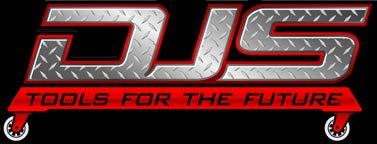






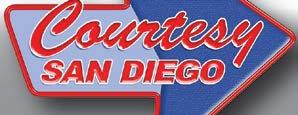





Just saying something doesn’t make it so.
Too often I hear collision shop owners say that they’re going to do something – improve customer satisfaction, increase sales or reduce cycle, for example. But when pressed for exactly how they’re going to do that, their answers are often pretty vague.
Ladies and gentlemen, just because you say something is going to happen doesn’t mean it will. That’s a wish, a desire that something will happen, rather than a plan to make it happen. A goal is when you actually have an action plan – preferably in writing – on how to accomplish it.
A good action plan answers: What are you going to do? Why are you going to do it? How are you going to do it? Who will be involved?
Let’s take shop owner “Rob,” who wants to increase his shop’s sales by $400,000 a year. He built an action plan for accomplishing that goal.

One step, he decided, is to capture more necessary but not-included labor operations the shop is already
doing, but not consistently including on estimates or final bills. He and his estimators looked through some of our “Who Pays for What?” survey reports, and decided it’s realistic they can capture one more labor on every job. At 100 jobs a month and a $63 per hour labor rate, that would add $6,300 per month (or $75,600 a year) to the shop’s annual revenue.
So how will they get that extra labor hour per job? The first Thursday of each month, Rob will have a meeting with his blueprinting and sales staff to go over two or three not-included items the shop is doing regularly that could be included on estimates. Together, they will discuss how to negotiate for those items.
Think about that plan: It lays out what is going to happen, who is involved, and when and how they are doing it. That’s a goal, not just a wish.
The other part of Rob’s action plan is to improve the shop’s closing ratio. Right now the shop has a 60% closing ratio. That means it is writing about $900,000
in estimates every month, but only capturing about $540,000 (60%) of that potential work.
Rob sets a goal of improving that closing ratio to 63%. That would mean the shop’s sales would rise to $567,000 per month (63% of $900,000) without needing to get a single additional customer through the door.

How will Rob accomplish that goal? First, he is going to bring in some after-hours sales training for
his team. And every estimate for a job not immediately scheduled by the customer will be put into a file; an estimator or customer service rep will call each of those customers the next day with a script Rob and his team develop to help get that job scheduled. If unsuccessful, that estimate will move into another file for another follow-up call a certain number of days later.
The added labor hour per job will generate an additional $75,600 in revenue over a year. The improved closing ratio will generate an additional $324,000. That puts Rob within $400 of his goal. And it’s not just a wish. He has an action plan for how to accomplish it, with specifics about what will be done and who will do it.
So enough with the wishes. Set goals. Put the plan in writing. Keep it to a manageable four or five action items. And delegate but don’t abdicate; get others involved, but don’t just dump it on them. Then regularly show them how the shop as a team is making good on that plan.
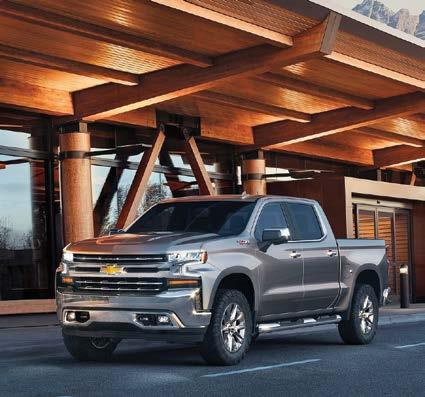



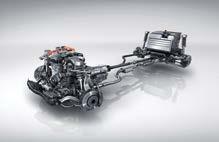
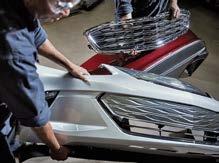



Jack Molodanof answers questions from California auto body shops owners on how to avoid fines by complying with state regulations.
Dear Jack,
The cost of disposing of toxic waste such as solvents, paint, primers, etc. has increased significantly in recent years and I was wondering whether I can charge a hazardous waste fee to my customer?
Signed, Curious Collision Shop
Yes, auto body shops may charge a customer separately for costs associated with the handling, management and disposal of toxic wastes or hazardous substances under California or federal law which directly relate to the servicing or repair of the customer’s vehicle, according to the California Code of Regulations.
However, there are specific requirements that must be followed.
Any fees for handling, management and disposal costs of hazardous waste directly related to a specific job must be itemized separately in the estimate and invoice. If the auto body shop routinely collects a “hazardous waste fee” for a service that creates hazardous waste, such as paints, primers and solvents, the auto body shop estimate and invoice must include the facility’s Hazardous Waste Identification Number, or more commonly known as the EPA Number. It allows registered hazardous waste transporters to lawfully transport the waste to a recycling facility.
Please note that the hazardous waste fee may not act as a source of profit for the auto body shop and furthermore, cannot be charged arbitrarily without a financial analysis of what the true cost is to the collision facility. The hazardous waste fee should be calculated for the auto body shop by a third-party environmental health and safety (EHS) company. Depending on how much hazardous waste the facility generates per year, the EHS company determines a “per repair service” charge that can be passed onto the customer to offset
Encinitas Autobody Repair, a staple in Encintas, CA, for four decades, faces eviction due to a major redevelopment plan. David Cartwright, 75, and his wife Barbara Grace, who have managed the shop together, are now on a quest to find a new location to continue their legacy of automotive services.
The Coast News reported the redevelopment, spearheaded by RAF Pacifica Group’s Adam Robinson, will transform a section of North Coast Highway 101 into The Captain at Moonlight Beach, a mixed-use complex featuring 45 condos and commercial spaces. The Encinitas Planning Commission granted unanimous approval in October 2023.
“We just want to put the word out to see if someone has a place we can find to sublet nearby,” Grace told The Coast News. “We’re a small family operation, but we do services that no one else does, so it would be great if we could stick around.”
the fees in which the shop must pay. Again, this charge, and the EPA Number, must be separately itemized on both the initial estimate and the final invoice.
The information provided in this article does not, and is not intended to, constitute legal advice; instead, all information, content and references are for general informational purposes only.
Molodanof is an attorney, lobbyist and expert in California’s automotive repair industry, representing the largest statewide automotive repair associations in California, including the California Autobody Association. He serves on the California Bureau of Automotive Repair (BAR) Advisory Group, offering valuable input on BAR programs. As a certified BAR Remedial Training Provider, he is authorized to instruct on laws and regulations related to the Automotive Repair Act. In addition to his legal and advocacy roles, he is co-founder of EduTech, a company that offers online BAR educational training courses. Contact him at jack@mgrco.org or 916-447-0313.
The Collision Industry Foundation (CIF) is delighted to announce Axalta, Enterprise and Dedoes Industries have all committed again to the CIF Annual Donor Program, each company’s fourth consecutive donation at the Urgent Care (second highest) tier.
Introduced in 2021, the Annual Donor Program was designed to bring needed recurring resources to CIF, so it can deliver on its mission to “Answer the Call” when those in the industry have been impacted by catastrophic events such as wildfires, hurricanes, tornados or flooding.
For more than two decades through the generous support of corporations and individuals, CIF has been able to assist hundreds of collision repair professionals in need after a disaster. CIF is grateful for Axalta and Enterprise’s continued support of the Annual Donor Program, which will enable CIF to continue its work for disaster relief assistance.
Jerry Sova, who owns another business included in the sale, a cell phone repair kiosk, told The Coast News the sale is expected to close June 24.
The sale also includes a restaurant, Captain Keno’s, and a hotel, the Portofino Beach Inn.
Cartwright is known for his mechanical expertise, particularly in transforming vehicles like his 1971 Chevy Vega station wagon. He said he wants to spend a few more years doing serving the community’s auto service needs.
“Here’s hoping I die with my boots on with a hammer in hand,” Cartwright told the news outlet.
“I came back here in the 1980s (from New Jersey) and was thrilled to get into the auto body business in Encinitas.”
Anyone with information related to space for lease can contact Encinitas Autobody Repair at 760-402-1644.
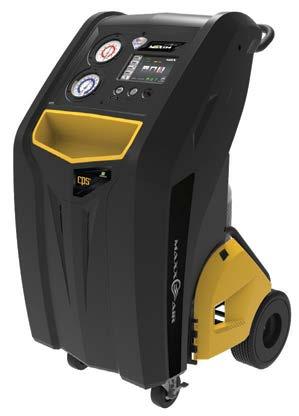

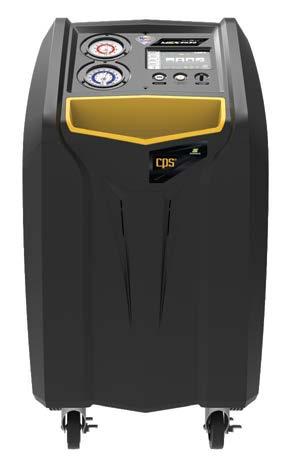










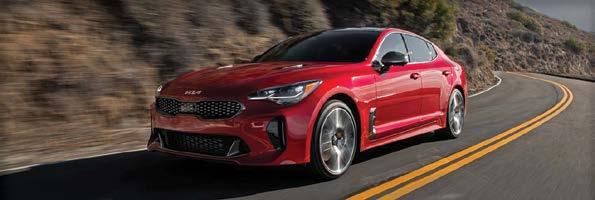







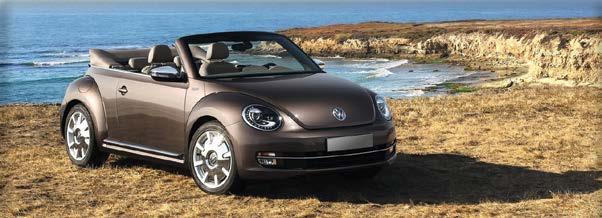









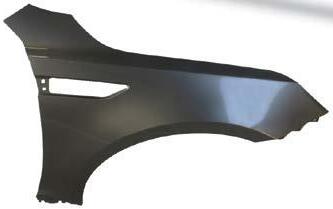








Bosch’s Mobility Aftermarket division officially launched the Bosch EV Training Tour alongside its supplier, AVI, March 21, in Fort Myers, FL, with a “Breakfast with Bosch” kickoff event. The tour will begin traveling across the country in early July.
The EV Training Tour will hold three one-day, eight-hour courses in cities across the U.S. Each course will have a maximum of 20 attendees. The Bosch-created curriculum will be instructed by a Bosch-certified AVI professional trainer and feature EV repair-related topics including the fundamentals of an electric vehicle, electric motor concepts, power electronics, maintenance and troubleshooting topics and more.
In addition to learning relevant EV maintenance from industry experts in a classroom-like setting, attendees will leverage training aids, built by AVI, to easily access and work with electric and hybrid vehicle systems in a hands-on environment.
Learn more at aviondemand. com.
At Fix Auto Mount Vernon, just north of Seattle, WA, several generations of multiple families have served the drivers of the local area, taking their role as a small, independent business in the community to heart, on National Mom and Pop Business Day — celebrated March 29 — and every day.
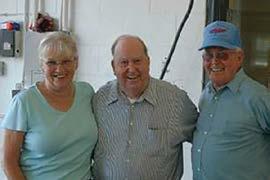
Fix Auto Mount Vernon, formerly Dally’s Auto Body, is locally owned and operated by Gloria Hulst and Raymon Bonner. This dynamic team also runs Fix Auto Kenmore.
“Our family members have been involved from the beginning,” said Hulst. “My parents purchased this collision repair facility in 1988. Before that, another family owned it — and they started it in 1935! Our business and its legacy are so
ingrained in Skagit County that, to this day, we advertise that Fix Auto Mount Vernon was Dally’s Auto Body. At one time, we had seven family members working here, and today we have four of our family on the job.”
National Mom and Pop Business Owners Day was established by Rick and Margie Segel, in honor of their parents and the successful hat shop they opened in 1939 and grew into a 10,000-square-foot, $2 million clothing shop. It is a special day to appreciate the long hours, hard work and dedication it takes to run a small business.
The connection with the community has been a key component for Hulst and Bonner and their team, serving those most in need.
“We have always been involved with our community,” said Hulst. “Whether being a drop point for collecting sleeping bags for the homeless, raising money for community events or supporting the Rotary and Helping Hands food bank, we believe that giving back is part of our role as a local business.”
Hulst noted being a locally
owned family business is incredibly hard but rewarding.
“I have always found that business ownership is inviting and rewarding,” she said. “Being able to make decisions that affect our employees and our community make it that much more worthwhile. We want to give back and help inspire the next generation of leaders for our community, from providing a first job opportunity to a 16-year-old, to hiring a young technician and paying for their I-CAR classes, it’s rewarding to be able to give back.”
Fix Auto Mount Vernon is already planning for the next generation of family leadership. Adam Bonner is set to purchase the business and continue the legacy of serving the community as a local, independent mom-and-pop business.
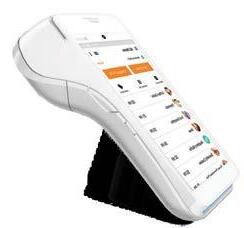


TWC/HO2S/WR-HO2S/CAC/TC/DFIU.S.
2.3L-Group:GFMXV02.3VJW
Evap:GFMXR0125NBV Noadjustments FEDOBDII ABZ
Thecombinedweightofoccupantsandcargoshouldneverexceed

TOAVOIDSERIOUSINJURYORDEATH: •Donotleanagainstthedoor. •Donotuseseatcoversthat Seeblocksideairbagdeployment. owner’smanualformoreinformation.
AVERTISSEMENT
POURÉVITERDESBLESSURES
GRAVESOUMORTELLES: •Nevousappuyezpascontrelaporte. •N’utilizezpasuncouvre-siège quipeutbloquerledéploiementdu Voircoussingonflablelatéral.lemanuelduconducteurpour deplusamplesrenseignements.
Californiaclass/stds: PC/ULEVqualified Group: FGMXV01.80111.2L
Evap:SFI/HO2S/TWCFGMXR0095805 , OBD:II

SRSSIDEAIRBAG COUSSINGONFLABLELATÉRAL (SRS)
TIREANDLOADINGINFORMATION
SEATINGCAPACITY
REAR 2
TOTAL 4 FRONT 2
Thecombinedweightofoccupantsandcargoshouldneverexceed352kgor776lbs. 240kPa,35PSI240kPa,35PSI

TOAVOIDSERIOUSINJURYORDEATH: •Donotleanagainstthedoor. •Donotuseseatcoversthat Seeblocksideairbagdeployment. owner’smanualformoreinformation.
COLDTIREPRESSURE
TIRE SIZE
215/55R1697H
POURÉVITERDESBLESSURES
FRONT REAR SPARE
GRAVESOUMORTELLES: •Nevousappuyezpascontrelaporte. •N’utilizezpasuncouvre-siège quipeutbloquerledéploiementdu Voircoussingonflablelatéral.lemanuelduconducteurpour deplusamplesrenseignements.
WARNING AVERTISSEMENT THIS VEHICLE CONFORMS TO ALL APPLICABLE FEDERAL MOTOR VEHICLE SAFETY THEFT PREVENTION STANDARDS IN EFFECT ON THE DATE OF MANUFACTURE SHOWN ABOVE .
215/55R1697H
T125/85R1699

Conformstoregulations: 2015 Fuel: Gasoline
U.S.EPAclass/stds: LDV/TIER2
SEEOWNER’S MANUALFOR ADDITIONAL INFORMATION
Californiaclass/stds: PC/ULEVqualified Group: FGMXV01.80111.2L
420kPa,60PSI
TIREANDLOADINGINFORMATION
combinedweightofoccupantsandcargoshouldneverexceed352kgor776lbs. 240kPa,35PSIPSI

VEHICLEEMISSIONCONTROLINFORMATION
Conformstoregulations:2016 MY
U.S.EPA:T2B4 LDV
TWC/HO2S/WR-HO2S/CAC/TC/DFI
FEDOBDII Fuel: Gasoline ABZ
California: Not for sale in states with California emissions standards.
2.3L-Group:GFMXV02.3VJW
Evap:GFMXR0125NBV
Noadjustmentsneeded.

Unlock savings and precision fit with genuine parts

• Save time and money: reduce returns by up to 16%
• Faster ordering process
• More accurate orders
• Easier invoice processing
• Live information
• Seamless fit
• Competitive pricing
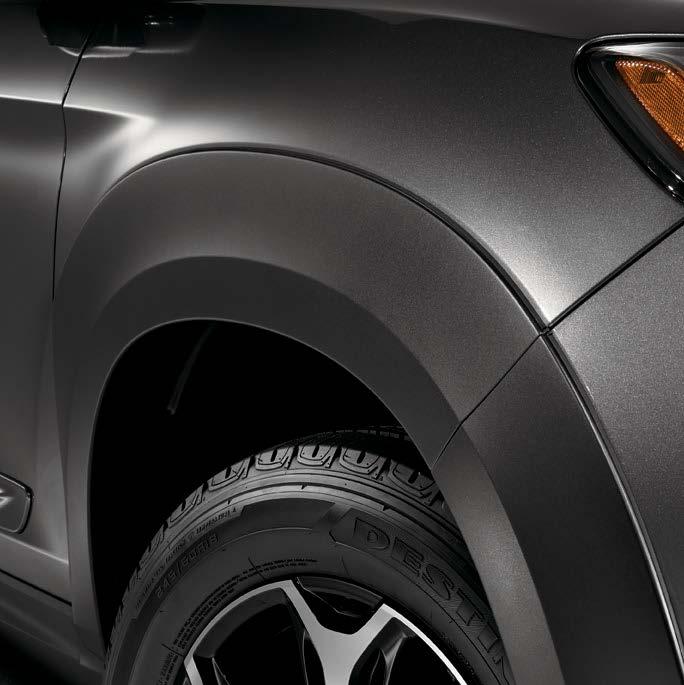
Order now on CCC ONE®
Please contact these dealers for your Honda or Acura Genuine parts needs.
Barber Honda
Bakersfield
661-396-4235
Dept Hours: M-F 8-5:30 bestchoice@barberhonda com
Capitol Honda
San Jose
408-445-4412
Dept Hours: Mon-Sat 7:30-6; Sun 8-5 sbettencourt@penskeautomotive com
Concord Honda
Concord
925-825-8016
Dept Hours: M-F 8-6 kevin valenzuela@concordhonda com
Galpin Honda
Mission Hills
800-GO GALPIN
818-778-2005
Dept Hours: M-F 7:30-6; Sat 8-2 mteeman@galpin com
Honda of El Cajon
El Cajon
619-440-5851
Dept Hours: M-F 7-6; Sat 7-5 parts@hondaofelcajon com
Honda of Hollywood
Hollywood
800-371-3719
323-466-3205
Dept Hours: M-F 8-6 parts@hondaofhollywood com
ACURA
CALIFORNIA
Acura of Concord
Concord
925-680-4233
Dept Hours: Mon-Sat 7-6 keith�whisten@cacargroup�com
Acura of Fremont
Fremont
888-435-0504
510-431-2560
Dept Hours: M-F 8-6; Sat 8-5 mike ohare@acuraoffremont com
Acura of Pleasanton
Pleasanton
888-985-6342
925-251-7126
Dept Hours: M-F 7:30-6; Sat 8-6 mitch cash@hendrickauto com
Honda of Pasadena
Pasadena
800-433-0676
626-683-5880
Dept Hours: M-F 8-6; Sat 8-4
Honda of the Desert
Cathedral City
760-770-0828
Dept Hours: M-F 7-6; Sat 7-5 mpartridge@honda111 com
Keyes Honda
Van Nuys
818-756-6549
Dept Hours: M-F 8-6; Sat 8-5 malvarez@keyeshonda com
Larry Hopkins Honda
Sunnyvale
408-720-0221
408-736-2608
Dept� Hours: M-Sat 8-5 parts1@hopkinsdirect com
Metro Honda
Montclair
800-446-5697
909-625-8960
Dept Hours: M-F 7:30-5:30; Sat 7:30-4 wholesaleparts@metrohonda�com
Pacific Honda
San Diego
858-565-9402
jgardiner@pacifichonda com
AutoNation Acura
Torrance
310-784-8664
310-539-3636
Dept Hours: M-F 7-7; Sat 8-5 alvaradow1@autonation com
Bakersfield Acura
Bakersfield
661-381-2600
Dept Hours: M-F 7:30-5:30 bakersfieldacuraservice@yahoo com
Marin Acura
Corte Madera
800-77-Acura
415-927-5350
Dept Hours: M-F 8-5:30; Sat 8-4 parts@marinacura com
San Francisco Honda
San Francisco
415-913-5125
Dept Hours: M-F 8-5 partsws@sfhonda com
Scott Robinson Honda
Torrance
310-371-8320
Dept Hours: M-F 7-6:30; Sat 7-5 mluna@scottrobinson com
Selma Honda
Selma
800-717-3562
559-891-5111
Dept Hours: M-F 7-6; Sat 7:30-4:30 hondapartsmgr@selmaautomall com
Larry H. Miller Honda
Boise
888-941-2218
208-947-6060
Dept Hours: M-F 7-6; Sat 8-5
Hinshaw’s Honda
Auburn
253-288-1069
Dept Hours: M-F 7-6; Sat 7:30-4:30 rickb@hinshaws com
Metro Acura
Montclair
800-446-5697
909-625-8960
Dept Hours: M-F 7:30-5:30 wholesaleparts@metrohonda com
Acura of Honolulu
Honolulu
866-931-9086
808-942-4557
Dept Hours: M-F 8-5; Sat 8-4
Johara@lithia com
Tokuda@lithia com
RayleenGarcia@lithia�com
McCurley Integrity Honda
Richland
800-456-6257
509-547-7924
Dept Hours: M-F 8-5:30; Sat 8-4 hondaparts@mccurley net
South Tacoma Honda
Tacoma
888-497-2410
253-474-7541
Dept Hours: M-F 7:30-6; Sat 8-5 bgregory@southtacomahonda com
Hinshaw’s Acura Fife
253-926-3331
Dept Hours: M-F 7-6; Sat 8-5
johnny@hinshaws�com

One of the most talked-about challenges in the collision repair industry today is the significant shortage of skilled workers. The Collision Career Institute (CCI) was established in 2015 to help solve this crisis.
“We designed a program to supercharge the growth of collision repair teams across the United States,” said Erick Bickett, co-founder and CEO of CCI. “Our team’s sole purpose is the learners’ success.”
Bickett said the genesis of CCI was rooted in necessity. Known by many in the industry as a visionary and innovator, Bickett recognized the dire need for new industry talent. With a resume including initiatives like the Collision Industry Electronic Commerce Association (CIECA), Fix Auto USA and Caliber Collision, he realized the challenges facing collision repairers.
Bickett wasn’t alone in his quest. He partnered with Charlie Robertson, a recognized authority in collision repair education with more than 25 years of experience, over the shared vision of revolutionizing the way collision repair professionals were trained.
“A lot of shops think the problem has been around a half a dozen years or so, but it has been an ongoing problem for a long time,” noted Robertson, CCI president and co-founder.
With Bickett’s industry acumen and Robertson’s educational expertise, they set out to tackle the tech shortage.
Their plans were met with an unforeseen challenge – the COVID-19 pandemic.
“Because of our dedication to the industry and future leaders, CCI pivoted during the pandemic to assist technical schools and provide curriculum support at no cost,” said Robertson.
CCI then embarked on a journey to redefine in-shop collision repair training.
“Our approach was simple yet revolutionary,” said Bickett. “We worked toward providing a comprehensive curriculum that addressed the core challenges facing the industry.”
Their efforts were supported by the addition of a new team member, Dan Dutra, vice president of business development.
“Dan’s dedication to the industry is matched only by his commitment to excellence,” said Robertson. “Together, we’re united in our mission to reshape the future of collision repair.”
Dutra said they listened to shop owners, career and technical school educators, insurers, technicians and students to refine the curriculum and support materials that deliver skills to new industry entrants.
“CCI has every variable covered at this point and will produce productive
with the U.S. Department of Labor.
CCI begins with a tailored assessment of the shop.
“It is critical that a shop has the right learning environment and culture to embark on this journey,” said Dutra.

In most cases, CCI recommends repair centers evaluate the company’s culture and environment before bringing in recruits. They’ve found some of the best candidates come from their own detail and parts departments, those who are already part of the team and known to be trusted and dependable.
the business’ bottom line.
“We also provide repair centers with suggested tool strategies, pay plans and resources to track and measure the transfer of skills to help apprentices produce more than they cost within 90 days of the program starting,” Robertson said.
The online program is delivered through the Canvas Learning Management system. It includes presentations, videos, handouts and skills-tracker workbooks. Students can access the materials on their smartphone, tablet, laptop or desktop computer.
“Apprentices experience every angle of the repair process in their chosen career path, as a technician, painter or repair planner,” explained Robertson.
standalone techs inside of 18 months,” he said.
Bickett emphasized that CCI’s vision extends beyond technical skills.
“It is about instilling a mindset of excellence and innovation,” he shared. “Our program focuses on teaching entry-level technicians collision repair skills so they can be successful and productive.”
The CCI team has found the holistic approach resonates with shop owners and industry professionals.
“CCI’s goal is to provide a defined career path and training for those interested in joining the industry or already working in the industry in less critical roles,” Bickett explained.
Bridging the gap between classroom theory and real-world application has had its challenges, according to Robertson.
“The challenging shop dynamics make it very difficult for a new person to learn,” he said.
To address this, CCI adopted a competency-based approach to learning, focused on mastery instead of completion.
“Rather than being time-based as with most schools, CCI’s program is competency-based,” Robertson clarified.
The program is approved by the California Division of Apprenticeship Standards and registered as a national apprenticeship program
“Ideal entry-level candidates include those who show up on time every day, are trustworthy and respectful and have excellent soft skills,” noted Robertson.
CCI helps shops match an applicant s work style and personality with their trainer to ensure it is a good fit.
“We don’t suggest using the highest-performing technician in the shop,” said Bickett. “Instead, we look for a trainer who might be a little older, needs a helper, and has the ‘teacher gene’ – someone who wants to give back to the industry.”
“We use a combination of work style and personality assessments that have been customized and tailored to our industry,” added Robertson. “Apprentices then start training using a mapped-out plan, tracking and measurement to ensure they have gained the skills needed to be successful.”
The program was designed to work with all the established processes and variables in a shop.
“We work closely with shops to transform their teams’ capabilities,” explained Dutra. “CCI guides apprentices through the skills they need to be successful through online learning and on-the-job skills development, utilizing the work assigned to their trainer.”
“We provide a road map for the in-shop trainer to allow apprentices to learn the skills they need to be successful,” added Robertson.
CCI’s process develops skilled apprentices while they contribute to
The online courses are supplemented with skills-tracker workbooks for apprentices to keep track of their developing skills. QR codes link to “how to” videos explaining how to perform each skill. The trainer guide provides step-by-step directions for trainers, helping them improve skillstransfer to learners.
As students progress, they repeat skills from previous courses so no skill diminishes during their apprenticeship.
“This ensures a learner has the skills to perform work in a live shop environment,” said Dutra.
Ultimately, he said they must contribute to the bottom-line by helping move cars through the shop during the learning process.
“With CCI’s guidance, shops can transition entry-level candidates to B-level body techs, painters and estimators,” said Dutra.
“We are inclusive, not exclusive,” said Robertson. “We don’t think we’re the only ones with the answer and are open to working with others who have a piece of the puzzle to help solve this dilemma.”

AJ Gaston, general manager at Fix Auto Downey in California, said good technicians who know everything from A to Z are hard to find and often expensive to hire.
Gaston has worked at Fix Auto Downey, owned by Little John’s Bodyworks, for more than 38 years. Since the family-run business opened in 1960, Gaston said it has built a reputation for quality service. Most technicians are long-term employees, but some trainees have left because they weren’t part of a structured training program.
“Many times, when you hire someone new, they think they know how to do certain tasks, but they really don’t,” he noted.
Gaston recently hired two technicians after they graduated from Universal Technical Institute (UTI). They were taught how to weld and learned basic skills, but had limited knowledge working on cars.
He wanted to find an apprenticeship program that would allow him to pair the new
techs with a mentor so they could learn enough to become fullfledged technicians.
After doing research, he decided that the online apprenticeship program offered by the Collision Career Institute (CCI) was a good fit.
About six years ago, Gaston tested CCI’s program. He said it offered many benefits but took time away from a user’s daily duties.
Following the pandemic, CCI revamped its program and Gaston implemented it again.
“They told us it’s much different and we would like it a lot better,” Gaston recalled. “We really do like how things work now.”
Since implementing it, Gaston said it has helped educate technicians on how to properly repair modern vehicles.
The first step was assessing the incoming technician/ student and mentor to ensure compatibility.
He has been impressed with the program’s flexibility, which allows technicians with industry experience to start the program
at the appropriate level.
“That’s part of the beauty of the program,” said Gaston. “They don’t have to start over and waste time learning what they have already learned at another shop or technical school.”
Technicians can also input their I-CAR learning into the CCI app.
Alex has used the program for nine months and Eddie started it about four months ago.
“It is part of their daily job, other than one hour a week when they have a conference call with their CCI training manager,” explained Gaston.
“CCI is a very hands-on program and is very well designed for new techs joining the automotive collision industry,” said Alex, one of the helpers. “It’s more like an ‘in-person ASE course.’ Each module is well thought out with support from great coaches.”
Eddie agreed. “My experience with CCI has been outstanding,” he said.
Eddie has found the staff at Fix Auto Downey want to keep track of the students’ progress,
and the assignments represent real-world challenges technicians would encounter in any shop, giving them confidence to do any assigned work there.
“I’m grateful for this program because it allows me to continue expanding my knowledge,” he said. “I’m also grateful for the shop where I work because it lets me continue my education in an area I’m passionate about.”
Their mentor, Larry, said CCI’s program helps him keep track of what has been taught to the student and what still needs to be presented.
Gaston said CCI’s program offers a structured approach to collision industry education and includes information to ensure technicians use the proper materials and provide the correct documentation.
It also helps technicians and mentors stay on track by letting them know what module they should work on daily.
“Programs like CCI will help produce good techs that our industry desperately needs,” said Gaston.
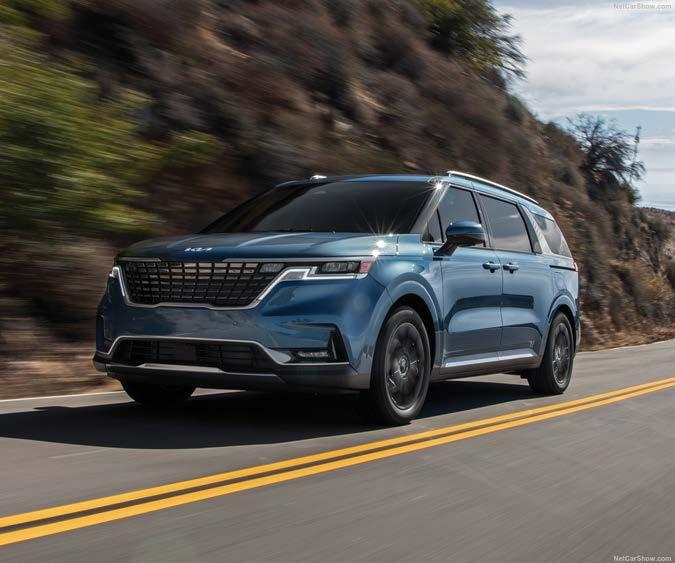
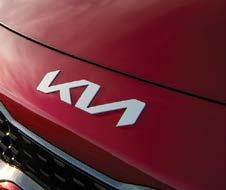


Crash Champions on March 26 announced the acquisition of Hoffman Auto Body in Boise, ID, located at 3977 W. State St., which will transition to Crash Champions effective immediately.

“We’re proud to continue quickly expanding the Crash Champions team across Idaho,” said Crash Champions Founder and CEO Matt Ebert. “The Hoffman Auto Body team has a proud tradition of serving the Boise community with reliable collision repair service and this acquisition aligns seamlessly with our ongoing strategic growth plan across the market. We’re proud to welcome Hoffman Auto Body and its employees to the Crash Champions team.”
After the successful acquisition of Addison Collision Repair in Twin Falls, ID, on March 25, Crash Champions now operates 10 high-quality repair centers across Idaho and a total of more than 625 locations in 37 states.
“This is a proud step forward for our team and longtime local customers,” said Chad Roberts, owner of Hoffman Auto Body. “We’re proud of our legacy in this community. Meanwhile, joining a founder-led MSO like Crash Champions ensures a best-in-class experience for our customers as well as unmatched career opportunities for our team members.”
Originally founded in 1999, Crash Champions has 25 years of experience delivering a bestin-class experience to customers and business partners. The organization is also a trusted collision repair team with many of the top automotive insurance providers.
CEO of the Auto Care Association. “Without change, local repair shops will be forced to turn away more and more business, leaving car owners with no choice but to foot outsized bills at the dealership. The REPAIR Act is critically needed to protect America’s vibrant network of local, independent repair shops that offer trusted service, convenience, and choice to millions of American drivers during the car repair process.”
Vehicle data restrictions disproportionately hurt small independent repair businesses by making it harder for them to offer certain repair services and parts to their customers -- which can leave some car owners with no other option than the dealership for some repairs, as seen in the Auto Care Association’s new survey. This growing trend is particularly concerning when considering that
consumers prefer independent repair shops to dealerships for vehicle repairs, according to separate research from Consumer Reports.
Last fall, the REPAIR Act, which has 50 bipartisan co-sponsors, unanimously advanced out of the House Energy and Commerce Subcommittee on Innovation, Data, and Commerce. In March, the Government Accountability Office (GAO) released a report detailing how vehicle repair restrictions can “disadvantage” independent repairers relative to dealerships.
The Auto Care Association’s survey, carried out by Hanover Research, involved 407 individuals from the independent auto repair sector, providing a margin of error of 5%. This research not only reinforces the narrative of the independent repairers but also complements findings from a similar survey by Babcox Media, which further delineates the labor and time losses incurred by these shops due to data access limitations.

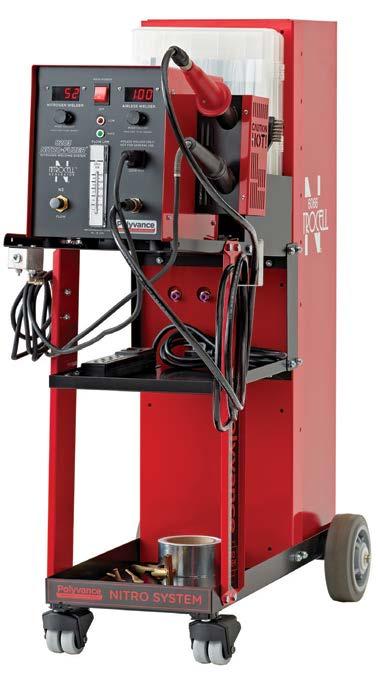
Crash Champions announced the acquisition of Brady’s Auto Body, located at 7615 NE 119th Place in Vancouver, WA, which transitioned operations to Crash Champions effective April 1.
“We’re proud to welcome the Brady’s Auto Body team to Crash Champions as part of another important step forward in our strategic growth plan,” said Matt Ebert, founder and CEO of Crash Champions. “The Brady’s Auto Body team has an established reputation of more than 20 years in the local community, and we look forward to continuing that legacy with high-quality consistent repair service to its longstanding customers.”
Crash Champions operates a leading network of more than 625 high-quality collision repair centers and backs all repair work with a written lifetime guarantee. The fast-growing operation is a trusted brand among many of the top automotive insurance providers and has added 12 repair
centers to its overall network since March.
“For more than two decades, Brady’s Auto Body has delivered high quality and reliable collision repair service to Clark County and surrounding communities and we’re proud of that legacy,” said Brady Lander , owner and CEO of Brady’s Auto Body.
“Today, we’re turning the page in our story by joining Crash Champions, one of the fastestgrowing founder-led collision repair teams in the industry. This is a proud step for our business that we believe will provide extraordinary opportunities to our team members, business partners and customers.”
Hertz is replacing CEO Stephen Scherr with Gil West, the former COO of Delta Air Lines and GM’s Cruise unit, as the rental car giant grapples with challenges related to its electric vehicle fleet and broader operational strategies, CNN Business reported. Scherr, who joined Hertz two years ago after a long tenure at Goldman Sachs, is stepping down amid the company’s ongoing troubles, including a $245 million blow to its earnings due to the depreciating value of its EVs.
Hertz announced in late 2021 it was buying 100,000 Tesla Model 3s. At that time, Scherr’s predecessor, Mark Fields, a former CEO of Ford, was in charge. But Scherr was CEO when, after reporting record earnings in 2022, the company announced in early 2023 it was increasing its investment in EVs, with plans to order 175,000 from General Motors and 65,000 from Polestar. “Our team delivered on renewed demand for travel, which is continuing,” Scherr said at the time. “In 2023, we will build on our progress to grow our business across the Hertz, Dollar and Thrifty brands. We look to our investments

in electrification and technology to yield increasing operating leverage and improved returns and an even better product to our customers around the world.” However, while EV sales in the U.S. increased by 40% in 2023, Hertz’s strategy to capitalize on this trend has not gone as planned. The depreciation of its EVs has been exacerbated by a price war initiated by Tesla. In January, Hertz announced it would sell off 20,000 EVs from its rental fleet – about a third of the total it has purchased due in part to high collision repair and logistics costs. A month later, it announced it was pausing purchasing more EVs from Polestar.
Industry analysts pointed to Hertz’s approach to managing its EV fleet as a critical misstep. Daniel Ives of Wedbush Securities criticized the company’s execution and marketing strategies, suggesting these shortcomings have left a lasting negative impact on the brand. Hertz’s struggles extend beyond its EV initiatives. The company faced additional setbacks, including a $168 million settlement related to false theft reports of rental cars.
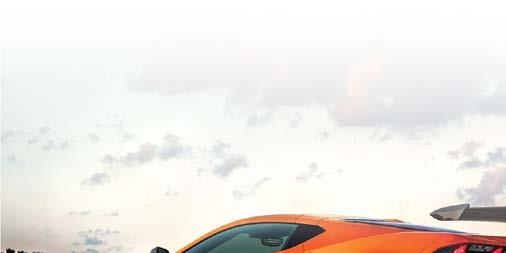






CIECA welcomed National Calibration and Diagnostic Solutions (NCDS) as a new corporate member. Established in 2022 by Darren Sodoski and Cliff Fegert, the company provides Advanced Driver-Assistance Systems (ADAS) calibration tooling, OEM diagnostics, training and support to independent garages, dealership body shops and calibration businesses.
With more than six years of experience performing ADAS calibrations and diagnostic programming, the partners identified the need to provide tools, equipment and training to those performing calibrations.
With ADAS calibration increasingly being part of the repair process, Sodoski said the company is currently developing calibration software for the industry. With their award-winning NCDS 360 Laptop launched at SEMA 2023, shops can have all desktop OEM diagnostic and programming software on one device. Sodoski said they are looking forward to getting involved in a CIECA committee.
TPG, a global alternative asset management firm, announced its U.S. and European private equity platform, TPG Capital, will acquire Classic Collision, a prominent national collision repair operator, from New Mountain Capital.
Classic Collision’s management team will remain invested in the company. Terms of the transaction were not disclosed.
“Today’s announcement is an exciting milestone for Classic Collision and a great testament to the strength of our team and our collective commitment to providing the highest quality service with integrity,” said Toan Nguyen, CEO of Classic Collision. “TPG shares our vision, and I believe they are the right partner to help us take Classic to its next level. I also want to thank the New Mountain team for their tremendous support as we’ve grown our platform.”
Classic Collision was founded in 1983 in Atlanta, GA, and has since grown an extensive reach across 262 locations in 16 states – 100 of those in the last four
ProColor Collision franchise coowners, Ashraf “AJ” Jakvani and Ray Jandga, opened a fifth ProColor Collision to serve more customers and continue on a growth plan to open additional ProColor Collision locations.
The Orange, CA, location, formerly Brooks Orange Body and Paint, is located at 735 W. Collins Ave. It has a strong staff, recent investments in new equipment and the latest technologies for repairing vehicles and running a successful business.
ProColor Collision Orange is the fifth location for Jakvani and Jandga, with other California locations in La Puente, Chino, Yucca Valley and Glendora.
“Ray and I feel it is our responsibility to take advantage of what we’ve accomplished thanks to ProColor Collision’s proven training, processes and support to a wider reach of customers,” said Jakvani. “The Orange location is a perfect fit for us. Brooks’ capable and customercentric staff remain with us, focused on our collective success.”
years, since it was acquired by New Mountain Capital in January 2020, the latest of which came with the two-shop acquisition of Heat Collision Auto Body Specialist in Florida.

Before New Mountain’s ownership, Classic was a familyowned and operated business that grew by adding greenfield locations and building a strong reputation with automotive insurance carriers and local dealerships.
“Toan and his team have grown Classic into a leading collision repair platform with best-in-class customer satisfaction, strong insurance partner relationships, differentiated manufacturer certifications, and a proven

In addition to providing outstanding service to its customers, ProColor Collision Orange is dedicated to supporting the local community. “We believe being a good corporate citizen is just as important as running a successful business,” said Jakvani.
“With the history of success at his first four shops, with three opening in early 2021 and one in mid-2022, I am confident that AJ and the entire team at ProColor Collision Orange are going to do great things with this location,” said Scott Bridges, senior vice president of Fix Network USA, ProColor Collision. “They recognized the strong team in place at this existing business with a retiring owner and will use the team’s experience and acumen to take this business to the next level.” ProColor Collision Orange is committed to providing exceptional customer service and high-quality auto body repair services to central Orange County. For more information about ProColor Collision Orange, visit procolor.com/en-us/shop/orange/.
acquisition and integration playbook,” said Paul Hackwell, partner at TPG. “We are excited to partner with management to grow the company’s market leadership while continuing to empower the distinct culture and passion for problem solving that distinguishes Classic.”
“Since our initial acquisition, Classic has accelerated investments in people, operations and innovation for the benefit of its customers.
We thank Toan and the management team for a successful partnership in building a leading, national collision repair platform,” said Ricardo Gonzalez, managing director at New Mountain Capital.
“Toan’s vision and ambitions for Classic and the future of auto body repair are differentiated, and we believe there is a bright future ahead for the business,” added Robert Mulcare, managing director at New Mountain Capital.
The transaction is set to finalize in Q2 2024.
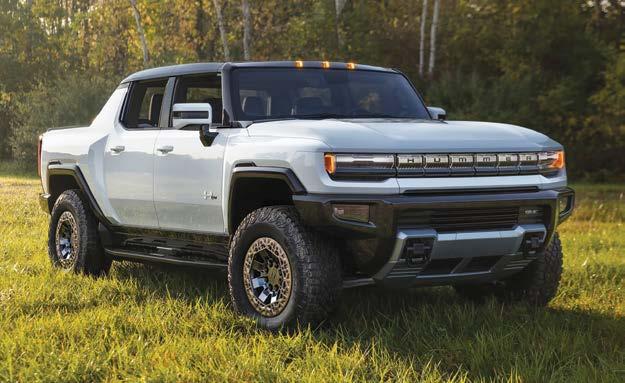


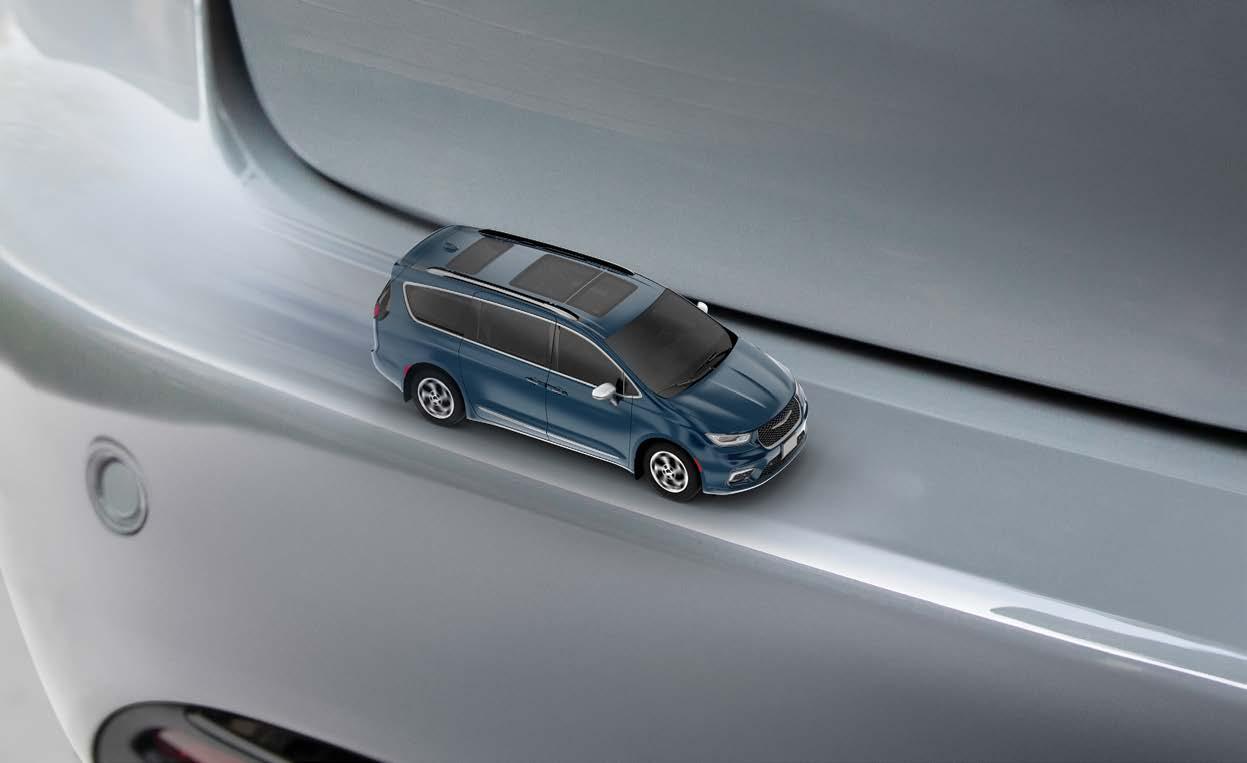
CCC Intelligent Solutions Inc. is now releasing its Crash Course Report on a quarterly basis, and the findings from the first quarter of 2024 show increasing vehicle complexity, combined with rising labor costs and shortages, are placing persistent pressure on carriers and repairers.
According to data compiled from 300 million claims-related transactions, while vehicles may be safer, more capable of avoiding crashes and more environmentally friendly, advanced technology is contributing to costlier repairs, higher claims costs and longer cycle times. Additional factors, such as scheduling backlogs, have contributed to the 60% increase in the amount of time it takes for vehicles to enter repair shops after estimate completion, compared to pre-pandemic times.
“Much of what the industry is experiencing is reflective of a new normal where complexity, beginning with the vehicle itself, is reshaping the market landscape,” said Kyle Krumlauf, director of industry analytics at CCC and coauthor of Crash Course. “CCC has
shifted to a quarterly publication of Crash Course to support the growing needs of our customers and the industry. This change allows us to provide more data and insights more frequently, helping industry participants anticipate challenges and be better equipped for the road ahead.”
Key Findings
Auto Tech Transformation: The report identifies key challenges faced by the auto claims and collision repair industries in keeping pace with the industry’s tech transformation, such as increased costs associated with repairing advanced driver assistance systems (ADAS) and other technology.
Electric Vehicle (EV) Repairs: EVs are becoming more common in repair assessments. Despite their youth, EV repairs carry higher costs, especially in labor. Longer repair times are common due to capacity constraints and detailed repair procedures. EVs are totaled less often than non-EVs, reflecting changing valuation trends.
Replace vs. Repair: An emerging “replace vs. repair” trend,

Audi Part Professionals are experts on collision parts, replacement components and mechanical items.
a preference for replacing parts instead of repairing them, demands different skill sets for the repair industry leading to higher costs for consumers. Over the past decade, the cost differential for repairing older versus newer model year vehicles has grown by 35%.
“Much of what the industry is experiencing is reflective of a new normal where complexity, beginning with the vehicle itself, is reshaping the market landscape,”
Kyle Krumlauf
Urbanization and Weather:
Acknowledging the impact of growing urbanization and volatile weather patterns as a constant catalyst for losses, the report confirms increases in property losses from severe weather events.
Subrogation: High turnover among adjusters is hindering subrogation efforts, leading to decreased referrals, and
Audi Burlingame Burlingame
888.737.5738
650.348.0883
Order Audi Genuine Parts from these select dealers.
complicating revenue and cost reduction strategies.
Casualty: Despite decreasing treatment duration and procedure counts for injury claims since the peak in 2021, severity continues to climb due to significant cost increases for medical bills, particularly for high-dollar procedures like radiology and surgery.
Claims and Repair Technology: Adoption of AI and automation tools to speed and inform functions from estimating to scanning to parts ordering continue to grow as the industry looks to offset the effects of labor shortages and the complexity that comes with today’s more sophisticated vehicles.
In addition to macro trends and topics, Crash Course Q1 2024 also includes industry-level detail on claims frequency and impact severity, medical costs, parts costs, total loss trends and more.
Previously published annually, Crash Course will be published quarterly in 2024 to provide more frequent updates on key trends and insight. The Q1 2024 report is the 29th edition of Crash Course.
Santa Monica Audi
Santa Monica
310.481.8216
310.393.6982 Fax
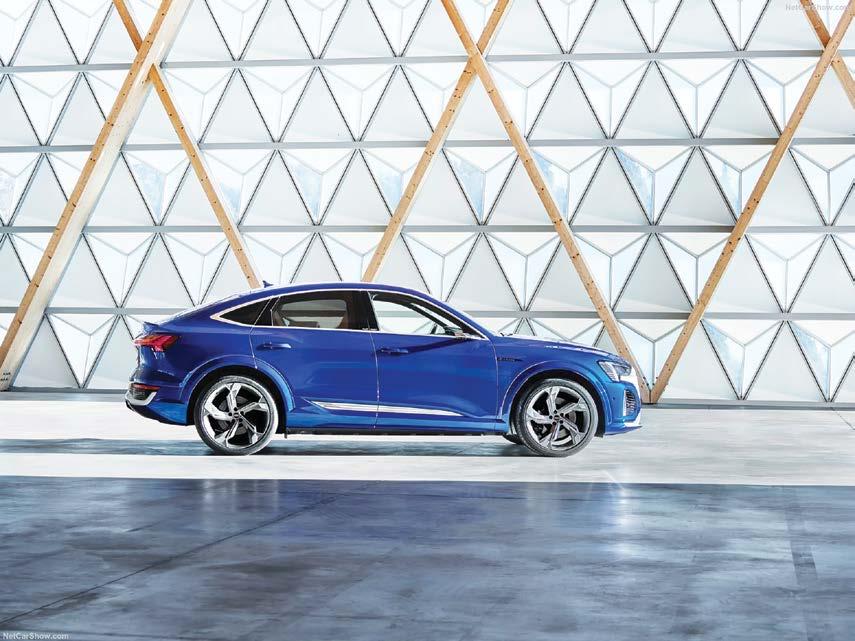
650.348.0837 Fax M-F 7:30am-4:30pm parts@rectormotors.com
Audi Rocklin Rocklin
866.948.0048
916.836.1286
916.836.1293 Fax
M-F 7:30am-6pm Sat 8am-5pm parts@audirocklin.com
Niello Audi
Sacramento
916-480-2851
916.483.1963 Fax
M-S 8am-5pm audi.parts@niello.com www.audi.niello.com
M-F 7:30am-5pm wholesale@santamonicaaudi.com www.santamonicaaudi.com
Audi Seattle
Seattle
206.634.8200
206.547.1581 Fax
M-F 7am-6pm parts@uvwaudi.com
www.audiseattle.com
Regardless of the age of your customer’s Audi, Audi dealers have access to over 200,000 part numbers and are supported by a nationwide network of distribution centers to help ensure non-stocked parts are delivered the next day.


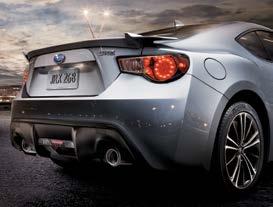
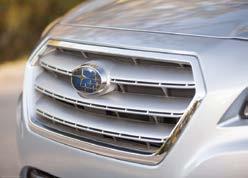












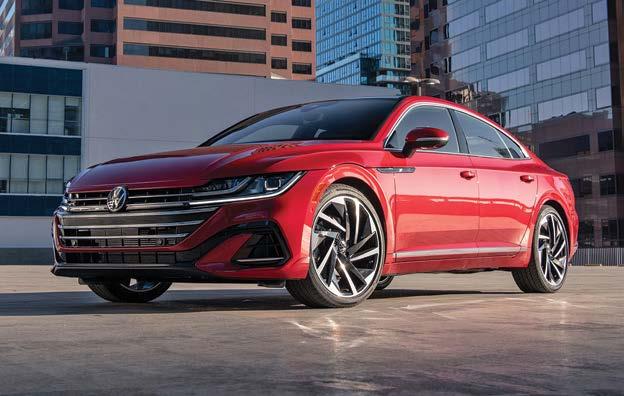



In 2023, vehicle thefts in the U.S. reached a new peak, according to the latest data from the National Insurance Crime Bureau (NICB). The report showed more than 1 million vehicles were stolen last year, marking a continued increase in nationwide vehicle thefts.
This rise is particularly pronounced in Washington, D.C., and one of its bordering states, Maryland, which have seen theft rates soar by 64% and 63%, respectively.
The NICB’s findings showed while the national theft rate grew by approximately 1% from the previous year, certain states and metropolitan areas faced much steeper increases. Behind Washington, D.C., and Maryland, the rest of the top five largest increases in thefts in 2023 were reported in Connecticut (33%), Nevada (18%) and
David J. Glawe, president and CEO of NICB. “From keyless entry hacks to relay attacks on key fobs, perpetrators are exploiting vulnerabilities in modern vehicle security measures with alarming

success rates. It is critical that industry and law enforcement work together to develop more
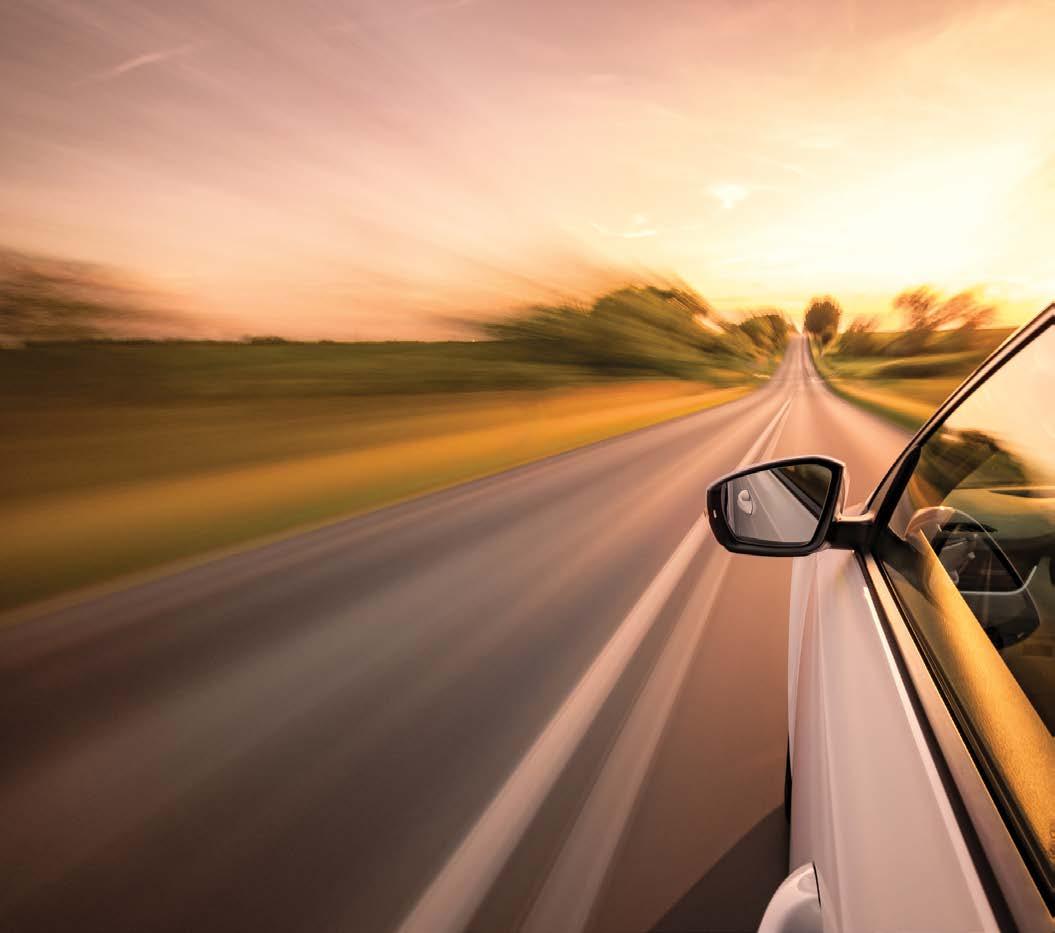
significantly to the national total. However, when adjusted for population, Washington, D.C., stands out with the highest theft rate – 1,149.71 thefts per 100,000 people, more than three times the national theft rate.
Urban centers continue to be hotspots for vehicle theft, with densely populated areas experiencing higher theft rates compared to more suburban or rural locales.
The top 10 states by volume have remained consistent in each quarter in 2023. After California, Texas and Florida were ranked second and third in thefts by volume with 115,013 and 46,213 stolen vehicles reported, respectively. Five of the states included in the top 10 theft states by volume also appeared in the top 10 list of states with the highest theft rates: California, Texas, Washington, Colorado and Missouri.
I-CAR introduced the Repairability Technical Support (RTS) app for mobile devices, a shift from RTS’s former online-exclusive presence to a more accessible platform, putting OEM Partial Part Replacement, OEM Calibration Requirements, technical news and industry best practices right at the fingertips of industry professionals.
The RTS app, available for download on both iPhone and Android devices, serves as a comprehensive information hub, aiming to bridge gaps within the collision repair industry and provide essential and real-time support especially to technicians and those doing repair planning.
Through RTS, I-CAR aims to connect with the entire collision repair industry to help close knowledge gaps, access technical best practices, provide clarifications on repair procedures, get the latest updates on emerging technologies, access OEM technical information, and simply respond to the evergrowing technical needs of this evolving industry.




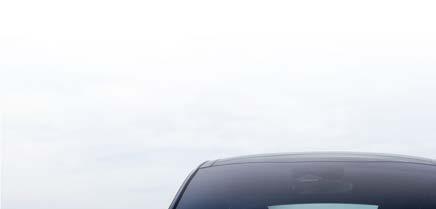





Concord Kia
Concord (888) 811-3058 (925) 685-2952 Fax
M-F 8am - 5:30pm Sat 9am - 1pm
Hayward Kia
Hayward (510) 999-8432
M- F 8am-5pm Sat 9am-4pm slparts@carnamic.com
Rosesville Kia
Roseville (916) 783-8129 (916) 783-1005 Fax
M- F 7am-6pm Sat 8am-4pm parts@rosevillekia.com www.rosevillekia.com
AllStar Kia
San Bernardino (909) 763-4755 (909) 763-4744 Fax
M-F 8am - 6pm Sat 8am - 2pm
parts@allstarkia.net
www.allstarkia.net
Car Pros Kia Glendale
Glendale (818) 745-1103 (818) 244-0017 Fax
M-F 7am - 6pm
duncan@carpros.com


Car Pros Kia
Huntington Beach
Huntington Beach (714) 274-6178
(714) 847-4410 Fax
M-F 7am - 6pm Sat 8am - 4pm
jasonr@carpros.com
Citrus Kia
Ontario (800) 583-7042
(909) 390-0948
(909) 390-0982 Fax
scunningham@citrusmotors.com
www.citrusmotors.com
M-Sat 7am - 6pm
Free Local Delivery
Ask for Ike, Jimbo, Chris, Juan, Sean, Jeff Se Habla Español
Kearny Mesa Kia
San Diego (800) 635-6669
(858) 560-5033
(858) 560-9648 Fax
Largest wholesaler in San Diego with 17 delivery trucks
Kia of Alhambra
Alhambra (626) 289-7803
(626) 289-8807 Fax
kip@kiaofalhambra.com
Kia of Carson
Carson (310) 221-9101
(310) 507-8595 Fax
M-Sat 7am - 7pm
Sun 8am - 5pm
www.KiaofCarson.com
Kia of Downtown LA
Los Angeles (213) 342-0923
(213) 342-0980 Fax
M-F 7am - 7pm
www.kiaofdtla.com
Kia of Irvine
Irvine (855) 847-3592
(949) 777-2342 Fax
North County Kia
Escondido (760) 945-9939
(866) 888-3074 Fax
parts@autogrp.com
www.northcountykia.com
M-F 7am - 6pm
In San Diego Over 10 Years
Valley Hi Kia
Victorville (888) 264-6075
M-F 7am - 6pm
Sat 7am - 4pm
smeyer@valleyhi.com
www.valleyhikia.com
Jim Marsh Kia
Las Vegas (877) 274-3820
(702) 946-6084 Fax
M-F 8am - 6pm
Sat 8am - 2pm
johnd@jimmarshauto.com
Towbin Kia
Henderson
(702) 868-1234
(702) 567-0037 Fax
M-F 7am - 6pm
Sat 7am - 4pm
jmoore@towbinkia.com
www.tkwholesale.com
Car Pros Kia Renton
Renton (425) 204-6635
(425) 793-3889 Fax
M-F 7am - 6pm
Sat 8am - 5pm
jgaeir@carpros.com
Lee Johnson Kia
Kirkland (425) 823-0188
(425) 284-1790 Fax
M-F 7am - 5:30pm
Sat 7am - 5pm
tthompson@leejohnson.com
The Society of Collision Repair Specialists (SCRS) welcomes Podium, a private technology company that develops cloudbased software for small businesses, as the newest corporate member to join the association.
Podium sets out to provide solutions that allow collision repair centers to capitalize on messaging, customer feedback, online reviews, selling products and requesting payments through consolidated customer channels, message automations and other easy-to-use features. The tools are intended to reduce the administrative burden and hours on the phone, while managing repair orders more efficiently with less calls and more texts.
According to Podium, messaging with customers wasn’t just the better way to get reviews – it’s the better way to do business – and it led to multiple product platforms that are modernizing the way local businesses in the collision industry are interacting with local customers, through convenient customer engagement.
Ford Motor Company on April 4 announced it is pushing back retooling its assembly plant in Ontario, Canada, for EV production, but its projects to build a new plant in Tennessee and add on to an existing facility in Ohio, both for EV production, are still on track.
At the same time, Ford is also expanding its hybrid vehicle offerings, on track to offer hybrid powertrains across its entire lightduty lineup by the end of the decade. In the first quarter of 2024, Ford’s EV sales increased by 86% and hybrid sales rose 42% versus a year ago.
“As the No. 2 EV brand in the U.S. for the past two years, we are committed to scaling a profitable EV business, using capital wisely and bringing to market the right gas, hybrid and fully electric vehicles at the right time,” said Jim Farley, Ford president and CEO. “Our breakthrough, nextgeneration EVs will be new from the ground up and fully software enabled, with ever-improving digital experiences and a multitude of potential services.”
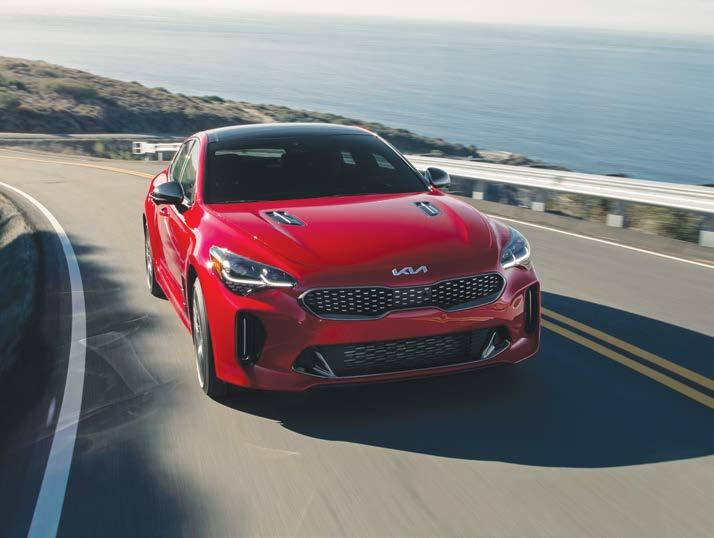
While the transformation of Oakville Assembly Plant from a gas vehicle assembly plant into an EV manufacturing complex will begin in the second quarter of this year, as planned, production of threerow EVs is being pushed back from 2025 to 2027.
Ford said the additional time will allow for the market for three-row EVs to further develop, and enable Ford to take advantage of emerging battery technology, with the goal to provide customers increased durability and better value.
The company will work with Unifor to mitigate the impact the launch delay will have on its workforce at Oakville.
The creation of the BlueOval City campus -- Ford’s new production complex that includes the Tennessee Electric Vehicle Center assembly plant -- is progressing as scheduled, Ford said. In addition to paint shop and vehicle assembly equipment, installation is also underway for nearly 4,000 tons
of stamping equipment that will produce the sheet metal stampings for Ford’s next electric truck, expected to begin deliveries in 2026.
Ohio Assembly Plant
Ford is also expanding its Ohio Assembly Plant in Avon Lake to produce an electric commercial vehicle beginning mid-decade.
Half of the structural steel is erected on the site, interior slabs are being poured, concrete walls are going up and masonry is beginning on interior walls. Ford expects to begin tool installation at Ohio Assembly Plant in spring 2025.
Design work continues on Ford’s future-generation EVs. A skunkworks team in California is developing a smaller, low-cost, profitable, flexible EV platform capable of underpinning multiple vehicles at high volumes.
In the meantime, construction is progressing at BlueOval Battery Park Michigan, in Marshall, MI, and at the BlueOval SK joint venture battery plants in Tennessee and Kentucky.

Fix Network Names Global VP of Strategic Operations
Fix Network announced the appointment of Nick Spiers as the company’s new global vice president of strategic operations, effective March 1.
In this newly created role, Spiers is responsible for overseeing and coordinating the strategic planning and execution of global operational initiatives for Fix Network and its family of brands.
Spiers joined Fix Network in 2016 as the manager of international operations, where he was instrumental in the company’s expansion into Australia, Germany and Mexico. In 2019, he was named director of strategic initiatives, where he worked globally on new business development and operations strategy, predominantly in the Middle East.
Spiers has more than 27 years’ experience in the automotive industry, where he’s held positions in sales, business development, commercial and operations. He is based in the UK.
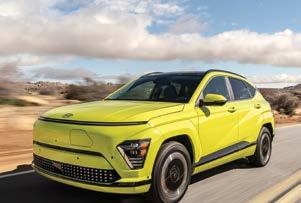


A federal appeals court on April 9 affirmed the 2022 reinstatement of the EPA’s Clean Air Act waiver allowing California to set stronger vehicle greenhouse gas emissions standards and zero-emission vehicle requirements than the federal government.
In doing so, the U.S. Court of Appeals for the District of Columbia Circuit dismissed a lawsuit filed by 17 Republican-led states and fuel industry trade groups challenging the waiver, claiming it harms their interests because it forces automakers to charge more for gaspowered vehicles. The court said the plaintiffs lacked standing.
The waiver allows California to set zero emission vehicle and greenhouse gas and other pollution emissions standards that are at least as or more stringent than EPA’s national standards. Seventeen Democrat-led states have chosen to adopt California’s standards.
Initially issued in 1970, the waiver was revoked in 2019 under former President Donald Trump and reinstated three years later by
the Biden administration.
“Today the court sided with common sense and public health against the fossil fuel industry and Republican-led states,” California Gov. Gavin Newsom said in a statement April 9. “This ruling reaffirms California’s longstanding right to address pollution from cars and trucks, work started by Gov. Ronald Reagan and codified by President Richard Nixon
“The clean vehicle transition is already here – it’s where the industry is going, the major automakers support our standards, and California is hitting our goals years ahead of schedule,” Newsom added. “We won’t stop fighting to protect our communities from pollution and the climate crisis.”
Environmental protection groups also lauded the court’s decision.
“Today’s ruling is a victory for cleaner air and cleaner cars not just in California, but across the nation,” said Joshua Berman, a senior attorney for the Sierra Club. “The D.C. Circuit has reaffirmed California’s critical role in protecting its residents
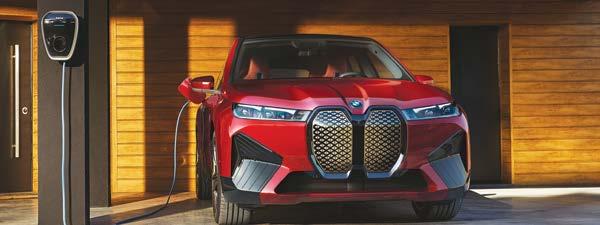

from harmful vehicle emissions, thereby benefiting the many states that rely on adoption of California’s standards to achieve and maintain the Clean Air Act’s air quality mandates.” In its decision, the appeals court noted automakers are already exceeding California’s zeroemission vehicles standards.
The California Air Resources Board showed “that ‘manufacturers are already selling more qualifying vehicles in California than the state’s standards require,’ suggesting that vacatur of the zero-emission vehicle mandate would not redress petitioners’ injuries,” the court said.
The court also acknowledged how climate change uniquely impacts California, as it contains seven of the 10 worst areas for ozone pollution and six of the 10 worst areas for small particulate matter in the U.S.
“It also faces ‘increasing risks from record-setting fires, heat waves, storm surges, sea-level rise, water supply shortages and extreme heat,’” the court said. “And these conditions are exacerbated by climate change.”
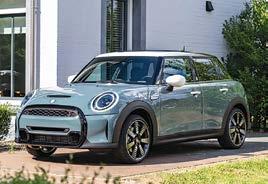
818-432-5819
818-769-1520 Fax
M-F 8am-6pm Sat 8am-5pm
eperez@centurywestbmw.com
M-F 7am-7pm Sat 8am-5pm
jason.rodriguez@ncbmw.com
www.ncbmw.com
John Van Alstyne, president and CEO of I-CAR, announced he will retire at the end of 2025.
Since joining I-CAR in December 2010, Van Alstyne has steered it through significant expansions, technological advancements and even global crises, with a steadfast commitment to excellence and innovation.
Under Van Alstyne’s guidance, I-CAR, a leading player in automotive training and education, has witnessed unprecedented growth and success. He has led a remarkable expansion of I-CAR’s product and service offerings, all with the goal of better serving the industry. He put I-CAR on the path to financial stability, reinvesting over $46 million to better support the industry, recently building a new technical center in the Chicagoland area that has served as a catalyst for advanced training, research and development.
The Board of Directors has named a Selection Committee dedicated to hiring a successor.
The Biden administration on March 20 introduced stringent tailpipe regulations for passenger cars and trucks, designed to significantly accelerate the transition to electric vehicles (EVs) and hybrids.
However, the final rule adopts a more gradual approach to phasing in these new regulations, offering automakers a broader spectrum of compliance options, following discussions with auto manufacturers and labor unions, who have advocated for a more flexible framework to meet the ambitious climate goals.
Originally, the EPA had proposed an aggressive strategy to ensure two-thirds of all new vehicles sold would be electric by 2030. This plan has been modified to allow for a substantial increase in the sale of plug-in hybrids, alongside pure electric vehicles, by the end of the next decade.
“By taking seriously the concerns of workers and communities, the EPA has come a long way to create a more feasible emissions rule that protects workers building ICE vehicles, while providing a path forward for automakers


to implement the full range of automotive technologies to reduce emissions,” the United Automobile Workers (UAW) said in a statement.
According to recent data from Kelley Blue Book, EVs accounted for only 7.6% of new car sales in 2023. Under the new regulations, the target is set for EVs to comprise between 35% and 56% of new vehicle sales by 2032, with plug-in hybrids aiming for 13% to 36%.
The EPA’s new rule is designed to cut passenger car pollution nearly in half by 2032 compared to 2026 levels, promising a substantial reduction in greenhouse gas emissions and other pollutants detrimental to human health.
The final rule gives auto manufacturers the flexibility to efficiently reduce emissions and meet the standards through the mix of technologies they decide is best for them and their customers –including gasoline engines, hybrids, plug-in hybrids and battery electric vehicles.
John Bozzella, president and CEO of the Alliance for Automotive Innovation, said automakers are committed to the EV transition, but
pace matters.
“Moderating the pace of EV adoption in 2027, 2028, 2029 and 2030 was the right call because it prioritizes more reasonable electrification targets in the next few (very critical) years of the EV transition,” Bozzell said in a statement. “These adjusted EV targets – still a stretch goal –should give the market and supply chains a chance to catch up. It buys some time for more public charging to come online, and the industrial incentives and policies of the Inflation Reduction Act to do their thing.
“And the big one? The rules are mindful of the importance of choice to drivers and preserves their ability to choose the vehicle that’s right for them,” Bozzella added.
Despite the rule’s perceived leniency, it represents a significant commitment to reducing automotive emissions and advancing the EV market. The EPA and the Biden administration remain confident this approach will not only address environmental concerns but also foster innovation and consumer choice in the auto industry.
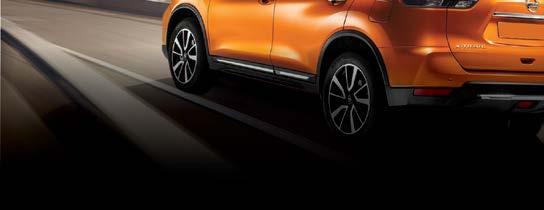


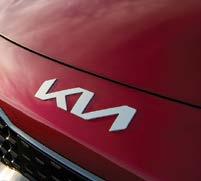
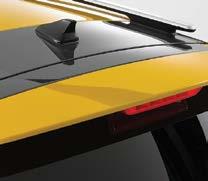

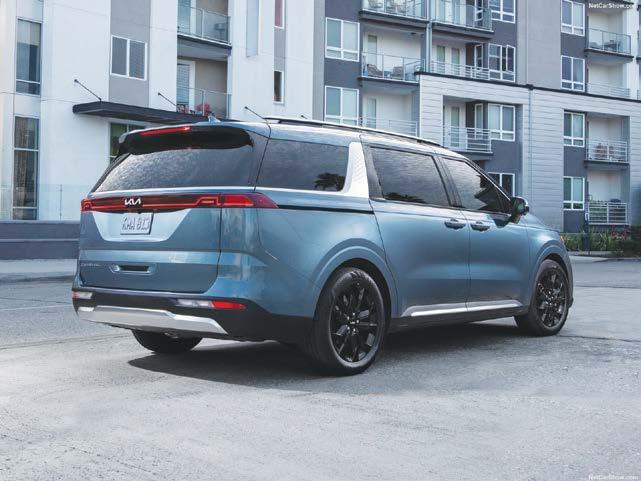


American Chevrolet MODESTO
209-491-7810
209-575-2564 Fax
M-F 7:30 am - 5:30 pm Sat 9 am - 2 pm gmparts@americanchevrolet.com www.americanchevrolet.com
Blackstone Chevrolet Wholesale Parts FRESNO
559-438-5875
559-438-4345 Fax
M-F 7:30am – 5:30pm Sat 8am – 4:30pm bharman@blackstonegm.com
Chase Chevrolet STOCKTON
209-475-6620
209-475-6708 Fax
M-F 7am - 5pm Sat 7:30am-4:30pm cesar@chasechevrolet.com
Dublin Chevrolet
Cadillac Buick GMC DUBLIN
925-828-8251
925-829-2941 Fax
M-F 7am - 6pm dublinchevyparts@cacargroup.com www.dublinchevrolet.com
No. California
FH Dailey GM Parts Center
SAN LEANDRO
800-4A-GMPART
510-351-0534
M-F 8 am - 5 pm Sat 8 am - 4 pm parts@fhdailey.com www.fhdailey.com
Michael Stead Cadillac
WALNUT CREEK
925-934-5022
925-934-0336 Fax
M-F 8 am - 5 pm Sat 8 am - 3 pm steadparts@gmail.com
So. California
Courtesy Chevrolet SAN DIEGO
800-336-1404
619-297-4023 Fax
M-F 7am - 6pm Sat 8am - 5pm www.courtesysandiego.com
Paradise Chevrolet
VENTURA
888-5-CHEVY-5
(888-524-3895)
805-642-0134
805-644-7214 Fax
M-F 7:30am - 6pm Sat 8am - 3pm
So. California
Rydell GM Parts Center
NORTHRIDGE
818-832-1660
818-832-1692 24 Hr Fax
M-F 7am - 6pm CHEVYPARTS@RYDELLS.COM
www.chevynorthridge.com
Thorson Motor Center PASADENA
626-793-0454
626-795-6872 Fax
M-F 7:30am - 6pm Sat 8:30am - 2pm parts@thorsonmotorcenter.com
Montana
Denny Menholt
Chevrolet BILLINGS
406-896-3111
406-896-3924 Fax
M-F 7 am - 6 pm tsoltis@dennymenholt.com
Nevada
Corwin Buick GMC RENO
775-333-8777
775-322-1837 Fax
M-F 8am - 5:30pm
ahardie@corwinauto.com
www.corwinbuickgmc.com
Michael Hohl Motor Company
CARSON CITY
775-884-8619
775-884-8645 Fax
M-F 7 am - 6 pm Sat 8 am - 5 pm
gmparts@michaelhohl.com
Washington
Camp Chevrolet SPOKANE
509-456-7860
509-458-3792 Fax
M-F 7:30am - 5pm
zacharydeason@lithia.com
www.campchevrolet.com
Kinderhook Industries, LLC, announced the acquisition of Kaizen Auto Care, LLC, in partnership with Jacob Tilzer and LNC Partners. Kaizen is a leading regional collision repair provider with significant presence in key markets across the western U.S.
Kaizen represents Kinderhook’s 30th automotive/light manufacturing platform investment. Financial terms of the transaction were not disclosed.
Founded in 2013 by Tilzer and headquartered in Scottsdale, AZ, Kaizen Auto Care is a fullservice collision repair chain that provides paint and body repair, auto glass repair, fleet services and EV specialty services to individuals and businesses through 48 locations across Arizona, Colorado, Southern California, Iowa, Nebraska and Nevada. The company aims to provide high-quality customer service and repairs to consumers, fostering strong partnerships with its insurance carriers. Kaizen partnered with LNC in 2021.
In connection with the transaction, Vince Brock will be
joining the Kaizen leadership team as CEO and will be teaming up with Tilzer, president of Kaizen, for the next phase of the company’s growth. Brock was previously the CEO of ProCare Collision, a Texasbased collision MSO and former portfolio company of Kinderhook. In partnership with Kinderhook, Brock grew ProCare Collision from eight to 45 locations, becoming the third-largest collision repair operation in Texas and one of the largest in the country. In 2021, Brock and Kinderhook sold ProCare to Classic Collision.
“I am thrilled to embark upon this new chapter of growth and expansion with Kinderhook and Kaizen,” said Brock. “I am extremely impressed with the growth Kaizen has achieved to date. The company has great shops with great people in great markets – a testament to the company’s commitment to excellence. I look forward to working with Jacob and the Kaizen team to continue building the company into an industry leader while setting the standard for growth and high-quality repairs.”
“The partnership with



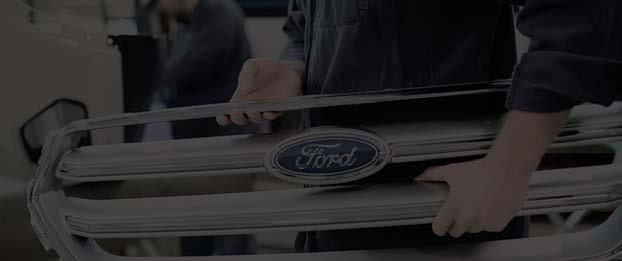
Kinderhook is major milestone for our company,” Tilzer said. “I’m excited about working with Vince and Kinderhook as we expand and continue to focus on providing the best working environment for our employees and exceptional repair experiences for our partners and customers. I would also like to thank the entire team from LNC who showed an incredible commitment to investing in our company and people.”
“Kinderhook is excited to partner with Vince, Jacob and the LNC Team to continue to invest in Kaizen’s growth. Kaizen is a platform with marquee locations, great clients and exceptional employees and we believe Kinderhook is uniquely positioned to help Kaizen achieve its next phase of growth,” said Michael Zoch, managing director at Kinderhook.
Kirkland & Ellis LLP served as legal counsel to Kinderhook.
Revv, a technology company leveraging AI-powered ADAS Calibration Identification resources, is the newest corporate member of the Society of Collision Repair Specialists (SCRS).
Revv ADAS was founded by software professionals with deep family ties in collision repair, setting out to resolve the immense difficulty of researching ADAS systems and the need for ADAS calibrations. It is focused on providing software tools necessary for the collision industry to calibrate ADAS systems easily, quickly and efficiently while prioritizing safe, proper repairs before vehicles return to the road.
“Revv’s mission of continuing to put the safest cars back on the road aligns closely with SCRS’s work advocating for the collision repair professional,” said Adi Bathla, co-founder and CEO of Revv. “We strive to provide the

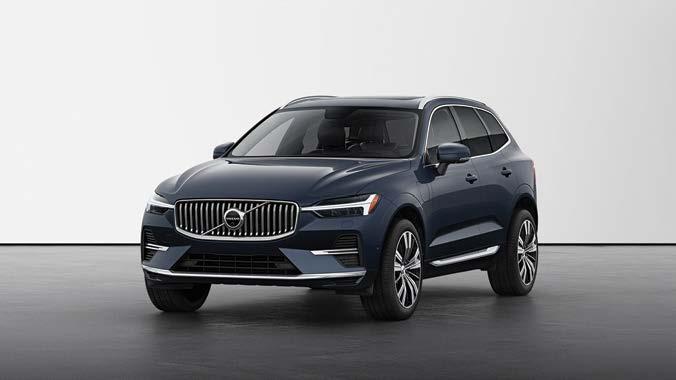
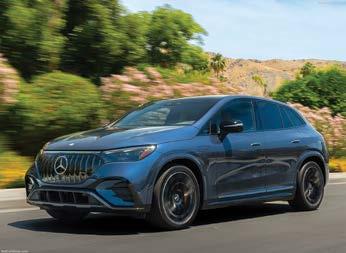

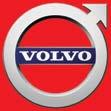

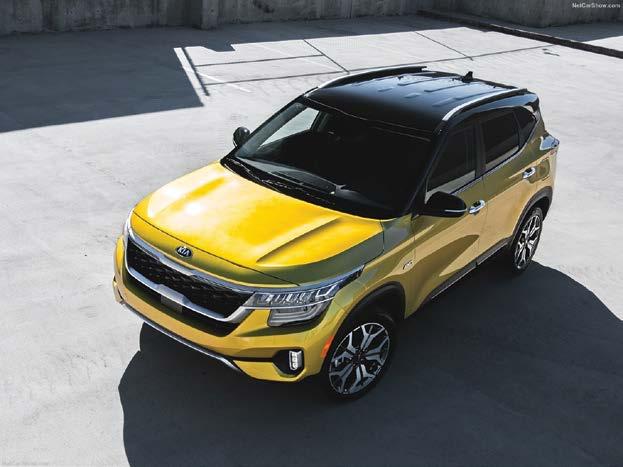
CCC Intelligent Solutions announced the introduction of its Intelligent Experience (IX) Cloud™ platform, a new event-driven architecture that overlays onto CCC’s existing cloud applications, customer workflows and customer and partner systems.
The platform is designed to offer more flexibility in how data is shared across CCC’s solutions and the 35,000 businesses that connect to them, building on CCC’s decades of SaaS expertise and data stewardship.
Laura Weber, senior manager of public relations for CCC, said the CCC IX Cloud is the “center point” of CCC’s technology, powering its customer applications, including its CCC ONE Total Repair Platform.
“At the product and solution level, repairers will continue to interact with CCC ONE as they do today,” she said.
“We hear from customers that they want to connect to ecosystem trading partners in new and more
intelligent ways,” Weber added.
“For years, we’ve provided data point-to-point. The new intelligent architecture will allow data to move more efficiently across our network.”

CCC is already using AI in its product offerings to speed up processes. The CCC IX Cloud will also use AI to flow data where it needs to go, based on customer rules and workflows.
“This way, authorized users will get access to data and get insights in the moments they need it, helping to speed up decisionmaking to take quicker, more confident action,” Weber said.
General Motors is being sued again for unauthorized driver data collection and sharing, influencing auto insurance rates, just a week after the automaker announced a halt to its data collection practices following the filing of a similar lawsuit earlier in March, according to the Detroit Free Press. The new lawsuit, seeking class action status, was filed in the U.S. District Court Eastern District of Michigan, by Larry Reed of Michigan and Darnell McCoy Sr. of California. They accuse GM and its subsidiary OnStar of privacy invasion and engaging in deceptive practices by secretly gathering their driving information and then sharing it with insurance companies to justify rate increases. This driving data, comprising details on acceleration, hard braking and speeding, was reportedly used without the drivers’ informed consent. E. Powell Miller, representing the plaintiffs, chose not to comment on the ongoing legal battle. In response to these serious allegations, GM spokesman Kevin Kelly said the company is currently reviewing the complaint and refrained from further comments.
“For example, a repair facility may receive a digital payment from an insurer once a claim has been auto approved,” she said. “Another example, a consumer could share photos taken at the scene of the accident which flow through to the insurer, shop and even other ecosystem providers, such as parts suppliers. Weber said the CCC IX Cloud is “designed to make life easier for everyone involved in a repair or claim experience – the customer, business and employees. When data and insights are available at key moments across the repair, faster, more confident decisions can be made, speeding up the process and improving the consumer’s experience.”
The CCC IX Cloud was announced as part of CCC’s new vision to “Make Life Just Work.”
“Making Life Just Work is at the heart of what CCC has been doing for more than 40 years. Today, it becomes our official north star,”
said Githesh Ramamurthy, chairman and CEO of CCC. “The industry is at an inflection point and customers are looking for ways to rapidly transform their businesses without disrupting existing operations. Our new intelligent architecture will help them deliver improved performance today while also providing a modern, flexible foundation from which customers can build and innovate for the future.”
“The only way to address the challenges facing the industry is by embracing a fundamentally new approach to human-centered technology,” said Marc Fredman, chief strategy officer for CCC. “Through the combination of data, advanced AI, and ecosystems, CCC is enabling our customers to transcend traditional boundaries and achieve unprecedented levels of success. With the CCC IX Cloud, CCC is not just envisioning a world where life just works, we’re actively engineering it.”
Learn more about the CCC IX Cloud, at https://cccis.com/ccc-ix.
The lawsuit in Michigan echoes concerns raised in the Florida case, filed March 13, where a plaintiff experienced a significant insurance rate hike due to GM’s data sharing with LexisNexis and insurers. Following the Florida lawsuit, GM announced March 22 it would cease its data-sharing activities with LexisNexis and Verisk, emphasizing customer trust and privacy reassessment. The day before the Florida lawsuit was filed, the New York Times reported on several drivers of GM cars who’d seen unexplained spikes in their car insurance rates, which were traced back to OnStar Smart Driver, a free feature in GM brands connected car apps, which the drivers had been unknowingly enrolled in.
While GM’s recent decision to end data sharing might suggest an acknowledgment of improper practices, experts like Erik Gordon and David Vladeck caution against viewing it as an admission of guilt. They told the Free Press the move could be a strategic response to potential bad publicity or a preventive measure against customer backlash.

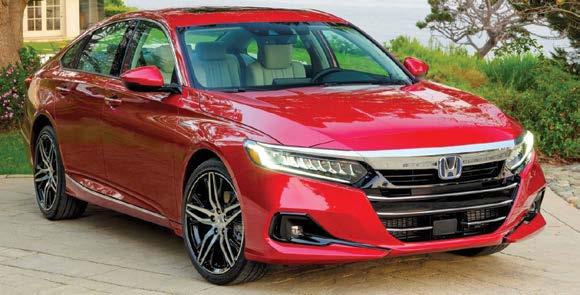





NISSAN
S. CALIFORNIA
DOWNEY NISSAN
Downey
562-334-1188
(562) 334-1195 Fax
M-F 7-5
wholesaleparts@downeynissan com
MOSSY NISSAN
ESCONDIDO
Escondido
888-292-0402
(760) 746-4300
(760) 739-5794 Fax
M-F 7:30-5
mikebe@mossy�com
RonH2@mossy com
NISSAN OF BAKERSFIELD
Bakersfield
888-402-6915
(661) 835-0389 Fax
M-F 7-6, Sat. 8-5
www nissanofbakersfield com
NISSAN OF VAN NUYS
Van Nuys
818-374-4421
(818) 787-8400
(818) 908-9520 Fax
M-F 7-6:30, Sat. 7-6
wholesaleparts@vannuysnissan com
www nissanofvannuysparts com
TEMECULA NISSAN
Temecula
951-972-8430
(951) 972-8396 Fax
M-F 7-6, Sat. 7-6, Sun. 8-5
wholesaleparts@temeculanissan�com
INFINITI
S. CALIFORNIA
INFINITI OF VAN NUYS
Van Nuys
818-374-4493
(818) 787-8400
(818) 809-2727 Fax
M-Sat. 8-5
wholesaleparts@vannuysinfiniti com
www infinitiofvannuys com
N. CALIFORNIA
FUTURE NISSAN
Roseville
916-677-5251
(916) 786-0743 Fax
M-Sat. 7:30-6
wholesale@futurenissan com
Parts FutureNissan com
MOSSY INFINITI OF ESCONDIDO
Escondido
888-292-0402
(760) 746-4300
(760) 739-5794 Fax
M-F 7:30-5
mikebe@mossy com
RonH2@mossy com
Don Henthorn, founder and visionary leader of BendPak Inc., passed away peacefully at his home on March 28 at the age of 85. His departure marks the end of an era for BendPak, a company that, under his guidance, evolved from a modest machine shop into a global powerhouse in the automotive service equipment sector.
Henthorn’s strategic foresight and leadership steered BendPak through decades of growth and innovation, establishing it as a leading name in the manufacturing of car lifts and automotive service equipment.
Throughout the years, BendPak has expanded its reach and product line, now boasting manufacturing and distribution facilities worldwide and employing more than 275 people. The company’s growth culminated in the move to a new LEED PlatinumTM certified headquarters in Agoura Hills, CA, and the development of the BendPak Industrial Complex in Alabama.
Boyd Group Services Inc. reported setting new records in sales and profitability in 2023. This news comes as the company continues to execute its aggressive growth strategy, marked by the addition of 106 new locations and substantial improvements in its financial metrics.
The company, which operates Gerber Collision & Glass locations in the U.S., as well as auto glass operations under several names, saw a 21.1% increase in sales, reaching $2.9 billion, up from $2.4 billion in the previous year, including a 15.8% rise in samestore sales, despite the fiscal year having one less selling and production day compared to 2022. Adjusted EBITDA followed suit, jumping 34.6% to $368.2 million, up from $273.5 million in 2022.
Boyd Group reported a 111.7% surge in adjusted net earnings, which climbed to $89.7 million from $42.4 million in the previous year. Similarly, net earnings per share saw a 111.6% increase.
Boyd’s strategic growth included the addition of 106 new


locations – 78 acquired and 28 startup locations.
The company also published its second Environmental, Social and Governance Report, and announced the election of Christine Feuell to its Board of Directors and the appointment of Jeff Murray as its new executive vice president and CFO.

“We are pleased with the strong financial results reported in 2023, once again achieving record sales and showing meaningful improvement in leverage and profitability when compared to the prior year”, said Timothy O’Day, president and CEO of the Boyd Group. “Demand for services remained high throughout
successfully negotiating selling rate increases from our insurance company clients to better reflect the labor cost increases we have been experiencing, although further increases are necessary to bring our labor margin back into the normal range.”
Looking ahead, Boyd said the pipeline to add new locations and to expand into new markets is robust, through single- or multilocation acquisitions, as well as through start-up locations.
Boyd is focused on optimizing performance of new locations, as well as scanning and calibration services, and consistent execution of its operating standards.
Given the high level of location growth in 2021, the strong samestore sales growth during 2022, and the combination of samestore sales growth and location growth in 2023, Boyd remains confident it is on track to achieve its long-term growth goals, including doubling the size of the business on a constant currency basis from 2021 to 2025 against











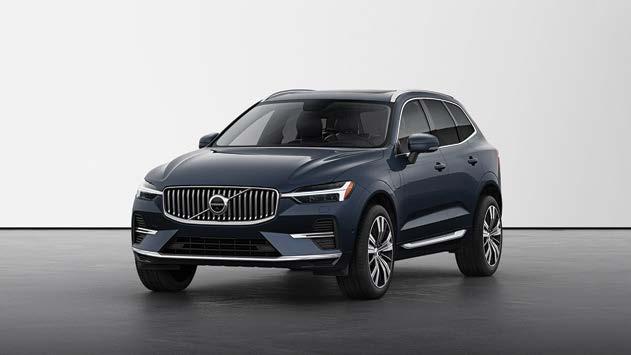

Spanesi Americas Announces Leadership Changes
Spanesi Americas announced the appointment of Alex Stapleton as North American sales and marketing director and Jeramy Holloway as director of aftersales. These appointments are part of Spanesi’s effort to strengthen its leadership team, enhance its service and support across Canada and the U.S., and fill the role of retiring COO
Timothy Morgan
This leadership expansion will allow Spanesi Americas to direct its energy towards fortifying product offerings, refining service delivery, and nurturing relationships with both its valued clientele and esteemed network of distributors throughout North America. Furthermore, the recent appointment of Holloway works well for the company’s collective vision. Spanesi looks forward to leveraging his expertise to elevate its post sales process and overall customer satisfaction.
Spanesi Americas also announced an enhanced partnership with Spanesi S.p.A. to bolster the company’s strategic objectives.
The “Who Pays for What?” survey series, conducted quarterly by Collision Advice and CRASH Network, is now in its 10th year, and offers evidence that shop awareness of not-included repair
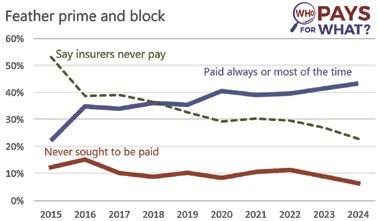
operations they are performing but may not be billing for has improved – as has shops’ ability to successfully get paid for that work.
Quarter Page (no bleed) | 4˝ x 5˝
Feather, prime and block is one of the “not-included” repair operations that has been asked about every year since the first survey in 2015. Ten years ago, just over 1 in 5 shops (22% of those billing for the
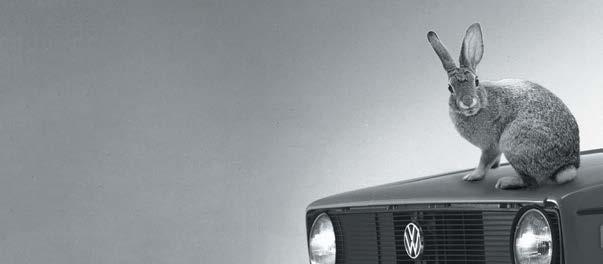
SO. CALIFORNIA Galpin Volkswagen North Hills 888 840-8416
Fax: 818-778-2090 www.galpin.com
Volkswagen Pasadena Pasadena
626-577-0300
866-654-8591
Fax: 626-568-0387
M-F 7:30am-6pm; Sat 8am-6pm
Niello Volkswagen Sacramento
916-482-5790
Fax: 916-481-9579
Mon-Sat 8am-5pm vw.parts@niello.com WASHINGTON University Volkswagen Seattle
206-634-8200
Fax: 206-547-1581
M-F 7am-6pm parts@uvwaudi.com www.universityvw.com
procedure) said they were paid “always” or “most of the time” by the eight largest national insurers for feather, prime and block when it was necessary and performed as part of a repair. But by this year’s survey in January, that had doubled to 44% of shops saying they are paid regularly for the procedure.
“In terms of actual numbers, these results indicate there are over 9,000 more shops regularly being paid for this in 2024 than there were in 2015,” Mike Anderson of Collision Advice said. “The surveys are important to keep raising shop awareness. Even today, about 1 in 20 shops still are not billing for this procedure when they perform it, despite the fact that 77% of shops that do bill for it get paid at least some of the time by those same eight insurers.”
Ten years ago, 53% of shops that negotiated to be paid for feather, prime and block said the insurers “never” paid them for it. But this year, just 23% of shops said they “never” get paid for it.
The latest quarterly “Who Pays for What?” survey is now open through the month of April. It focuses on not-included frame and mechanical labor operations. Shops can take the survey at www. surveymonkey.com/r/9NC7D6B
Survey participants receive a free report with complete survey findings along with analysis and resources to help shops better understand and use the information presented.
The survey can be completed in about 15 minutes by anyone familiar with their shop’s billing practices and the payment practices of at least some of the largest national insurers. Each shop’s individual responses are held in the strictest confidence; only aggregated data is released.
The results of previous surveys are also available at www. crashnetwork.com/collisionadvice.

Porsche Burlingame Burlingame, CA
888.737.5738
650.348.0883
650.348.0837 Fax parts@rectormotors.com ©2024

Stellantis recently issued a recall for approximately 318,000 Dodge Charger and Chrysler 300 cars, citing concerns the side curtain airbag inflators could potentially explode. The recall targets the 2018-2021 models of both vehicles, which are equipped with left- and right-side airbag inflatable curtains that use different inflators and propellants than Takata airbags previously associated with recalls.
Chrysler investigated five incidents where the inflatable curtain airbag inflators malfunctioned, all occurring under interior temperatures exceeding 120 degrees. There have been no reports of crashes or injuries attributed to this defect.
The investigation revealed the inflators might fracture over time, a condition exacerbated by moistureinduced corrosion traceable to the manufacturing process.
Stellantis said as of Feb. 21, there have been a few customer assistance records and warranty claims potentially linked to this issue, but no field reports have
been confirmed. The company estimates less than 1% of the cars in question are affected by this potential flaw. The recall predominantly affects the U.S. market, with approximately 285,000 cars, and extends to Canada, Mexico and other countries, adding up to around 318,000 vehicles globally.
Owners of the impacted vehicles will receive notification letters by May 3, and are advised to contact their dealers for the replacement of both side curtain airbags. Owners may contact customer service at 1-800853-1403. Stellantis’ number for this recall is 19B. In another announcement, Stellantis also initiated a recall for more than 1,000 Mopar side curtain airbags sold as replacement parts for 2011-2019 Dodge Charger and 2011-2020 Chrysler 300 cars. Those airbags will be replaced or repurchased. Owners can use the same phone number to contact customer service. Stellantis number for this recall is 20B.
The National Transportation Safety Board (NTSB) is looking into the role Ford’s BlueCruise hands-free driving technology may have played in a fatal collision in Texas.
The incident happened Feb. 24, when a Ford Mustang Mach-E going east on I-10 in San Antonio rear-ended a Honda CR-V stopped in a driving lane. Jeffrey Allen Johnson, 56, the driver of the CR-V, was taken to the hospital and later pronounced dead.
The NTSB’s Special Investigations Branch of the Office of Highway Safety said it will investigate “driver interactions with advanced driver assistance system (ADAS)” – that is, if the driver of the Mustang Mach-E had BlueCruise engaged at the time of the collision – with help from the San Antonio Police Department.
On March 15, a Ford spokesperson told Reuters the automaker “reported this


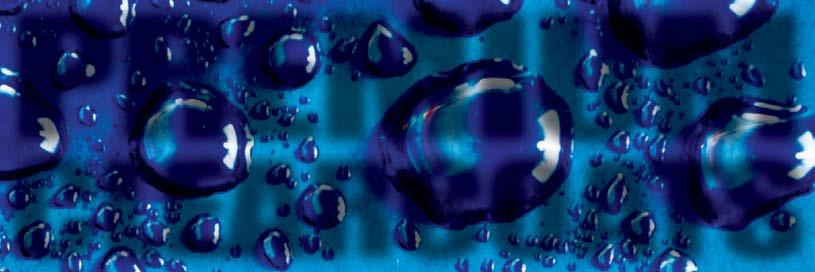
incident to NHTSA as soon as we were made aware, and we are actively researching all available information. Safety is a top priority for all of us at Ford, and we will collaborate fully with any resulting investigation.”
Ford’s BlueCruise is a Level 2 driver-assistance system. Automakers are required to report any incident involving a Level 2 system to the NTSB.
Level 2 systems provide steering, braking and acceleration to support the human driver, but drivers are still required to steer, brake and accelerate as needed to maintain safety, according to SAE International, which classifies levels of driving automation.
BlueCruise works on about 130,000 miles of pre-qualified highways in North America, called “Hands-Free Blue Zones.”
A blue light on an equipped vehicle’s instrument cluster indicates when the vehicle is in a hands-free zone.





















A cargo ship loaded with containers lost power and crashed into a pillar of the Francis Scott Key Bridge in Baltimore in the early morning hours of March 26, bringing down a large portion of the 1.6-mile bridge and dumping tons of debris and cargo into the Patapsco River.
The first concern was rescuing and recovering motorists who had been driving across the bridge, as well as Maryland Department of Transportation workers who had been repairing potholes. As of 1:30 p.m. ET, first responders were still searching for six people who went missing in the collapse. But the coming weeks and months will see a massive cleanup effort to reopen one of the nation’s busiest shipping ports, especially for the automotive industry.
The Port of Baltimore handles more vehicle shipments than any other U.S. port – 847,158 cars and light trucks passed through the port in 2023, the 13th consecutive year it was
tops in the country, according to the governor’s office.
The Port of Baltimore said in a statement later in the morning ship traffic into and out of the port was suspended until further notice, but trucks are still being processed in the marine terminals. It did not know how long ship traffic would be suspended. Bloomberg News and Reuters said Ford and GM had already set in motion plans to divert shipments of parts to other ports. “It’s going to have an impact,” Ford CFO John Lawler told Bloomberg. “We’ll have to divert parts to other ports... It will probably lengthen the supply chain a bit.”
Maryland Gov. Wes Moore declared a state of emergency, and U.S. President Joe Biden pledged the federal government would help.
“We’re going to send all the federal resources they need as we respond to this emergency,” he said in a statement delivered from the White House. “We’re going to rebuild that port together.”
Shell plans to divest 500 retail sites this year and another 500 next year, while expanding EV charging and convenience offers.
In its Energy Transition Strategy 2024 report, Shell said it is making the changes in its global retail network in response to changing customer needs.
Shell said it currently operates about 54,000 public charge points around the world. It aims to increase that number to 200,000 by 2030, focusing on markets where demand is increasing the most, like China and Europe.
The company is investing in public charging rather than home charging, because it believes public charging will be needed most by customers. In addition, Shell already has a competitive advantage in the size of its network of retail sites, which also offer conveniences like coffee and food while customers are charging their vehicles.
“As we grow our business offering charging for electric
vehicles, we expect an internal rate of return of 12% or higher,” Shell said.
Sir Andrew Mackenzie, chair of Shell, said in his message at the opening of the report that the company’s aim to become a net-zero emissions business by 2050 is the heart of its strategy.
Shell is investing between $10 billion and $15 billion on low-carbon energy solutions between 2023 and the end of 2025. The company is also investing in oil and gas production with lower emissions so it can “provide energy today while helping to build the lowcarbon energy system of the future.”
“As we work towards net zero, we are reducing emissions from our operations and energy products while becoming an increasingly successful organization,” Mackenzie said “Our energy transition plans cover all our businesses: Integrated Gas, Upstream and Downstream, Renewables and Energy Solutions.”



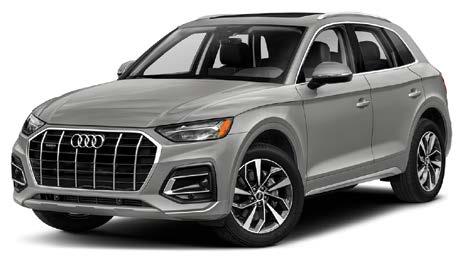
Co-President & Publisher
Nathan Gregory
Co-President & Publisher
Paul Stepanek Editor Abby Andrews
Contributing Writers
Mike Anderson, Stacey Phillips, Cole Strandberg, John Yoswick
Advertising Sales
Joe Momber, Norman Morano, Steve Sklenar
Office & Media Manager
Kelly Cashman
Director of Digital
Tesla settled a lawsuit April 8 over a deadly Autopilot-related crash, avoiding a trial set to begin the next day. Terms of the settlement were not disclosed in court documents.
The case, which has drawn widespread attention, involved the death of 38-year-old Apple engineer Walter Huang after his Tesla Model X veered off a Mountain View, CA, highway in March 2018.

The lawsuit, filed by Huang’s family in 2019, claimed Tesla’s Autopilot system was at fault for the accident. They argued the system failed to detect a highway barrier, leading to Huang’s fatal crash. The lawsuit also claimed Tesla and its CEO Elon Musk had exaggerated Autopilot’s capabilities, leading owners like Huang to believe the self-driving system “was safer than a humanoperated vehicle.”
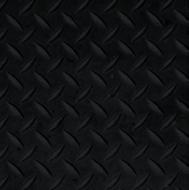

Tesla contended Huang was misusing the Autopilot feature by not keeping his hands on the wheel. An investigation into the crash by the National Transportation Safety Board revealed Huang was playing a video game on his phone when his Tesla drove into the barrier at 71 mph. Documents from Tesla, submitted as part of the case, showed Huang’s hands were on the steering wheel 34% of the time in the 19 minutes leading up to the collision, including the last six seconds.
However, in a court filing, Tesla said it agreed to settle to “end years of litigation.”
The settlement comes about five months after Tesla and its Autopilot system were found not responsible for a 2019 crash in Los Angeles, CA, that resulted in the death of the driver, Micah Lee, after his Model 3 veered off a highway, struck a palm tree and burst into flames. Tesla argued the crash was the result of human error. That case did go to trial, and a jury found there was no manufacturing defect in the Autopilot system.
